SEE PAGE 6
VanArsdall to retire, colleagues bid farewell
NATHAN ELLENBERGER
’26 | STAFF WRITER • Cathy
VanArsdall, Wabash’s Director of Student Accounts is set to retire this week. She is stepping down from the role after 23 years of dedicated service to the Wabash community.
As her colleagues eagerly explain, VanArsdall’s hallmark has been her selflessness and loyalty to the students she serves.
“She holds to a job where you don’t always deliver the best news, but she has the biggest heart of anyone that I’ve seen, especially in that position,” said Director of Financial Aid Alex DeLonis. “She goes above and beyond for students, and that’s crucial.”
Her impact over the years cannot be understated.
“When you think about how many years worth of students there are in 23 years, with a good average of at least 850 a year, that’s a lot of impact,” said CFO Kendra Cooks.
Cooks calculated that VanArsdall served over 5,863 students in her decades-long career.
Colleagues of VanArsdall believe that her work has been instrumental in the success of students at Wabash College.
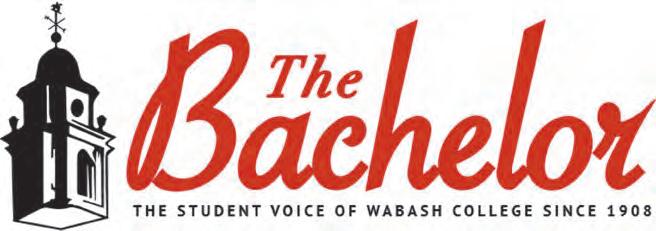
“She helped students and families understand what it takes to finance, how to understand the bill, and the financial obligations after financial aid.”
As the Director of Student Accounts, an appointment with VanArsdall usually is a result of financial difficulties for the student and their family. However, her student-first attitude keeps her from seeing her role as a debt collector. In a time when high dropout rates are caused by financial difficulty, VanArsdall uses her role to be a last line of defense for students.
“She uses whatever tools in her bag to be able to help families figure it all out,” said DeLonis. VanArsdall’s compassion would make her an asset to any administrative team. Her wide skill set ranges far beyond student-oriented accounting and support.
From state and federal compliance to working in an active role with fraternities, VanArsdall has done it all.
Considering the relatively small financial team Wabash has, their workload is immense.
“Though we may not have the volume of touring transactions of a bigger school, we still have to do all the same functions,” said Cooks.
For VanArsdall to execute her prominent role that carries these extra responsibilities with such diligence, heart, and humility is incredibly admirable.
VanArsdall was a critical leader in guiding Wabash and its students through national economic crises.
After the economic collapse in 2008, VanArsdall led the charge in assisting the students through this unexpected challenge.
“What she did to execute and help support the Wabash loan program, and getting the HEERF payments out to students, has been really instrumental,” said Cooks. Through all the challenges, VanArsdall has kept a smile on her face. When asked what she will miss most about her work, she answered without hesitation: “you guys, the students.”
Tennis: Doubles dilemma finally over?
SEE PAGE 12
Keeping up with the Campus Center
Renderings, student reactions and the fate of the Sparks Center

Part 2 in a series on Wabash 2032
COOPER E. SMITH ’23 |
SENIOR EDITOR-IN-CHIEF • Walking into Lilly Library any weeknight, students are sure to find the many scenes of college life. Of course, there is plenty of studying going on—but unlike most college campuses, Lilly Library also serves as the unofficial campus life meeting spot. From the video game room to Student Senate meetings, our library serves double duty. The reason for this dual use: Wabash conspicuously lacks a dedicated building for student life. That may be about to change.
In the third year of his tenure, President of the College Scott Feller has highlighted three strategic priorities as critical to his vision for the campus: belonging and inclusion, philanthropy and enrollment. One critical component in actualizing those priorities, according to Feller, is the Campus Center.
“To me, the Campus Center is at the intersection of belonging, enrollment and philanthropy,” Feller said. “Most campuses on college tours can show a true campus center. This is an area where we don’t show so well. We have a library that serves some of that role. And it’s nice in some ways, but there are real downsides to it.”
Feller isn’t alone; several Trustees of the College believe that a Campus Center could improve campus unity and brotherhood.
“I think more than ever we need our ‘one Wabash’ facility, a place where everyone—independents, fraternity guys, La Alianza,

MXI—can feel that it’s their home,” said Trustee and Vice Chair of the Buildings and Grounds Committee Jay Williams Jr. ’66. Williams serves as President of Broadcasting Unlimited and the co-founder of DMR Interactive. “Even back when I was there, people felt isolated in their living units and academic pursuits from others who were different. We need a place on campus where everyone can go and enjoy themselves—to dine, to go to Wally’s, to sit in the living room, bring a date— to intermingle with other students that they may not otherwise meet. I think that’s what we need: a place where everyone can feel like it’s their home.”
Feller envisions the Center as a neutral space, one that is not the domain of any specific group or activity other than a united Wabash locale.

“We don’t have a lot of neutral spaces on campus,” said Feller, explaining that the library often serves as the default, somewhat-neutral space. “But when you’re there, you know it’s an academic space. We can have events in Chadwick Court, but that’s athletics space. We could have a party at the Beta house, for example. But it’s their space.”
Feller explained that designing a welcoming space is especially critical for creating a sense of belonging and inclusion among out-of-state and international students, who are further from home while on campus.

“We’ve never made it a priority to have a space like
Continued page 2
Trump cries indictment, G.O.P. cries foul play
TIERNAN DORAN ’26 | POLITICS CORRESPONDENT
• Accusations that Donald Trump has been indicted and his arrest is imminent have taken the internet by stom. Surprisingly enough, the allegation comes from Trump himself. It seems Manhattan DA Alvin Bragg has investigated Trump for falsifying business records, specifically records regarding payments to adult film star Stormy Daniels. Former President Trump’s personal lawyer Michael Cohen went to prison facilitating a hush money payment to Stormy on Trump’s behalf.
In 2016, when Trump was the Republican presidential nominee, his personal attorney Michael Cohen had his eye out for potential allegations that could disrupt the campaign. As his campaign against Democratic presidential nominee Hillary Clinton ramped up, it was hit with a blow, when on October 7, less than two months before the election, an audio recording of Trump, dubbed the “Access Hollywood tape”, was released. In the tape he was heard making disparaging comments about women. After the release of the tapes, Stormy Daniels threatened to go public about an alleged affair with Trump. After the fallout of the recording, and in an effort to prevent any more damage, Cohen facilitat-
ed payments to Daniels in return for her silence.
A year prior, in 2015, Cohen met with David Pecker, the chairman of American media inc. (AMI) a company known for publishing tabloids such as the National Inquirer. Cohen and Pecker made a deal in which the National Inquirer would “catch” negative stories about Trump by buying up the rights and “kill” them by never publishing them.
Six weeks before the Republican National Convention, Karen McDougal, a former Playboy bunny, came forward with an alleged affair with Trump. Following through on their agreement with Cohen, in June 2016, AMI purchased McDougal’s life story rights for $150,000. Pecker then went to assign the rights to the story to Cohen for $125,000. The next day, Cohen incorporated a shell company, “Resolution Consultants LLC,” to covertly receive the money.
A recording of Cohen explaining the situation to Trump was released.
“I need to open up a company for the transfer of all of that info regarding our friend David...and I spoke to Allen about it when it comes time for the financing...”
“What financing?” said Trump. “We’ll have to pay him something,”responded
Cohen.
Ultimately, Pecker backed out of the rights transfer but continued to watch for other possible stories damaging to Trump. Eventually, Pecker informed Cohen that Daniels’ was willing to sell her story and was currently in talks with Good Morning America. Cohen negotiated a deal with Daniels, offering $130,000 in return for her silence.
In order to arrange the payment without leaving a direct trail to Trump, Cohen drew money from his home equity line of credit and requested it be deposited into the account of yet another shell company, “Essential Consultants.” Cohen then wired the $130,000 directly from
Essential Consultants to Daniels’ lawyer, after which Daniels signed a confidentiality agreement. Required paperwork surrounding the transfer falsely labeled the transition’s purpose as that of a legal retainer.
In 2017, Cohen invoiced the Trump organization for the purposes of recouping the money. He was paid back in monthly $35,000 increments which were marked as “Pursuant to the retainer agreement, kindly remit payment for services rendered for the relevant month,” once again a false label.

By the end of 2017, the payments, labeled legal expenses by The Trump Organization, totaled to $420,000. This total was a
combination of payment for Cohen’s services, payment for reimbursement of the Daniels payment, as well as an extra 60,000 to account for the income tax Cohen would have to pay on the hush money.
“Mr. Cohen, an attorney, received a monthly retainer, not from the campaign and having nothing to do with the campaign, from which he entered into, through reimbursement, a private contract between two parties, known as a non-disclosure agreement, or NDA,” tweeted Trump regarding allegation that campaign funds had been misused.
In 2018, Trump lawyer Rudy Guliani confirmed
Continued page 3
SEPTEMBER 10, 2021 VOLUME 115 • ISSUE 21
MARCH 24, 2023 FEATURES COURTESY OF COMMUNICATIONS AND MARKETING The Foundation’s new art initiative
SPORTS
COURTESY OF SHEPLEY BULFINCH
Artist rendering of the front of the new Campus Center.
COURTESY OF SHEPLEY BULFINCH
Artist rendering of the south side of the Campus Center, view from the Armory.
COURTESY OF SHEPLEY BULFINCH
Artist rendering of the dining hall within the new Campus Center.
COURTESY OF THE ASSOCIATED PRESS
Demonstrators rally outside of a New York courthouse to support the indictment of former President Donald Trump.
Continued from page 1
a Campus Center that is owned by all,” Feller said.
“That’s tough for students coming from a distance.
They need a place that feels like home, that isn’t just a dorm or a fraternity room. They need to have a more dynamic place that has activity over the whole arc of the year. We have moments where campus can feel pretty tame—and that can coincide when in-state students go home. So for those who aren’t from Indiana, are left unable to find a place with a critical mass of people or things to do. We need to create such a space.”
Feller explained that such event space could be an effective neutral site for contact between students and the administration, such as the town hall regarding strategic planning that Feller held on March 2. Without the Campus Center, such events are typically held in academic spaces.
Some out-of-state students have echoed Feller.
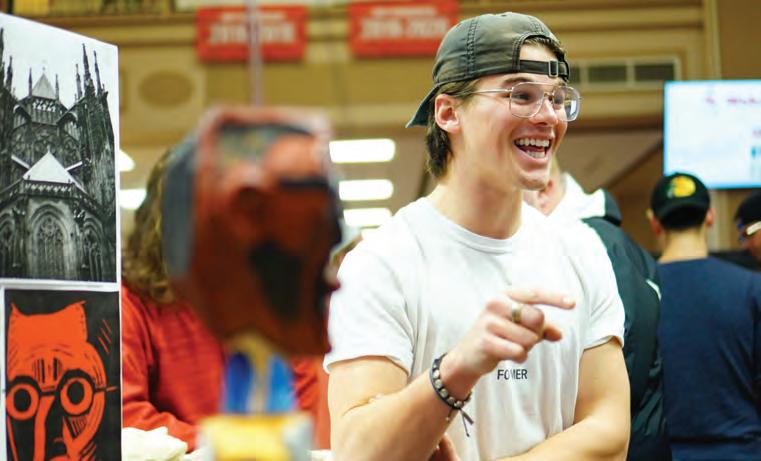
“As someone coming out of state, I’d say there is a lack of a common space for students to hang out,” said Jacob Ramirez ’25 from Alamo, Texas. “The Mall is a good common space, but we need somewhere else for students to interact. A fraternity can be that place, but your options are limited to meet guys outside your living unit. Having that opportunity outside of Sparks would be amazing. Playing pool, finding a place to sit and talk, maybe a small restaurant—that would be amazing. Something that would get the campus body to show up and interact with each other.”
“To me, the Campus Center is at the intersection of belonging, enrollment and philanthropy.”
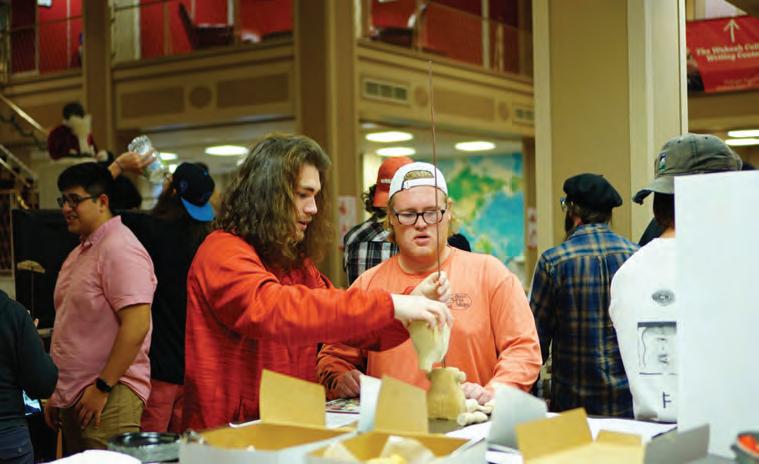
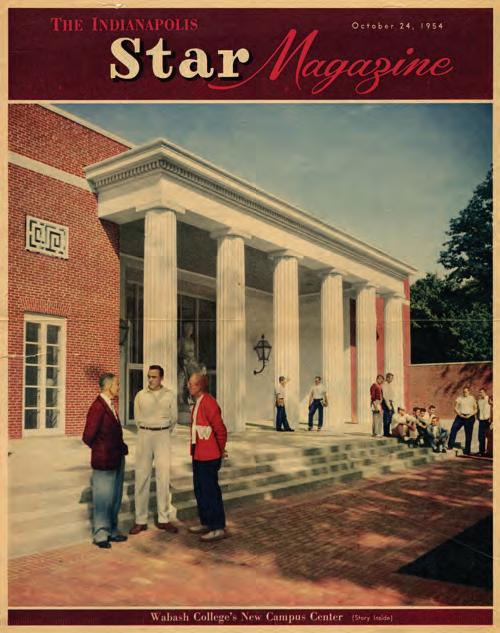
-President Scott Feller
“I was initially pretty excited about the idea of a Campus Center,” said Carson Price ‘23 from Hudson, Michigan. “I think that there’s not really that many accessible areas for students to spend time together outside of their rooms. Most buildings are designated for particular clubs or activities, like the Lilly Library or the Sparks Center. Having a Center where students can spend time together is important, and I see the benefits as a member of the MXI, as we have a place to hang out, study and just relax. It seems that a lot of students spend much of their time in their dorm, but some of the best things I’ve gotten out of Wabash have been the relationships I’ve built through socializing.”
This neutral-site vision has influenced the working designs for the new Center, as Trustee Jay Williams explained. One of the broader aims has been to design a Center that meets the context on campus in size and fit.
“We want it to fit the existing architecture,” said Williams. “We don’t want
Keeping up with the Campus Center
to overwhelm the campus. We want it to fit in and be a building that sort of blends in but also stands out on its own architecturally.”
Though the designs are not set in stone, the renderings give a strong picture of the core concepts of the Center.
“We’re to the point where we know what the basic program is and what the goals are of the building,” said Professor of Classics Dr. Jeremy Hartnett, who serves as the Faculty Representative on the Trustees’ Building and Grounds Committee. “We know what rooms there are going to be and how they’re going to be arranged. But we don’t know what wall color and what finishes there are going to be.”
Though the designs are not completely finished, many of the details of the designs are available. The Center will have two floors, with the second floor featuring an event center and a conservatory.
“The Event Center will seat at least 250 people,” explained Williams. “That will be a nice place to have dinners and functions, such as an event day or career fair.”
The Center will also feature a W Store, a space similar to the bookstore that may serve as a convenience store with evening hours. For relaxing spaces, the Center will contain living rooms and a game room. But where will the Center be located? According to Williams, the Campus Center will replace the existing Sparks Center, built in 1954. Originally called the Campus Center, Sparks initially served a similar function to the new Campus Center that the administration envisions. Sparks originally offered bowling, a bookstore and meal service to create a neutral space for relaxation and campus life.
But to create the new Center, the College will lose the Sparks Center.
“That’s the ideal, centrally located spot on campus,” Williams explained. But in addition to the physical location, the proximity to the library offers an opportunity for a new skywalk.
“We’ve planned a northsouth corridor so you can go from the library to the inside of the Center going through the building. There will be an east entrance on the Mall. It’s centrally located, and we’ve designed it so it could be an intersection for the campus.”
The intersection aspect is key, as the goal is for the Campus Center to be a place for students to run into each other outside of the classroom.
“A truth of undergraduates is that they will take the shortest distance between two points—even if it’s the ugliest route,” said Hartnett. “We want the [path] to be somewhat intentionally inefficient— we want you to have to bump into two or three people you know and have a short conversation or just say hello. So we can essentially strengthen the social fabric of the campus.”
“Part of the purpose of the building is to take the inclusive spirit of the [Lilly Library],” said Hartnett, “which feels like it belongs
to everybody, and to infuse that same sensibility into what currently reads as a space for independent men to eat.”
This location will match the exterior of the Center to the full campus scene.
bring [Morris and Wolcott] and really improve them.
conversations have become action steps.
“I think we’re sitting in a position where the earliest possible time that this could break ground would be spring of next year,” said Williams.
Though many students may hope for a completed Center sooner, Feller explained that the deliberate process may help reduce error.
“The design work is moving, probably slower than any of us want,” said Feller.
“But the more I watch, the more I think I don’t want it to go any faster, because it needs to be done right.
The hope would be that this design work can largely be completed this semester. Not 100%, because there will still be more feedback sessions and action steps.”
“One of the things I’ve learned is that you can obviously change things up until you start building,” said Hartnett. “It’s cheaper—it’s free—to change things now. So there are a number of things that are still up for discussion.
Feller explained that philanthropy is a critical part of the planning stage for the Center.
Another critical stage in beginning construction is securing financial support.
See first and second renderings on front page
“The Mall side will be much the more formal side,” Williams said. “The south side facing the Armory and the stadium will be more open and glass-oriented to catch the light coming in. The west side will have a portico and porch area, so people can enjoy dining inside out.”
The plans to demolish the Sparks Center and replace it with the Campus Center raises questions about two potential other demolitions, with proximity to Sparks: Morris and Wolcott, two smaller independent living units located directly behind where the new Campus Center will be located. The current plan, as Hartnett and Williams explained, is to keep the two independent living units in the same location.
“If the pandemic has taught us anything, having single rooms is not a bad idea,” said Hartnett. “But we also know that those are popular spots. And with a dynamic center of activity nearby, I suspect they will only become more popular.”
“Right now, we’re planning on keeping them,” Williams said. “I’ve been fighting to keep them for some time—they’re very popular units. A lot of guys are used to having their own private room, and they aren’t used to sharing space. For just a few million on each building, we could
I think that’s better than tearing down and starting over.” Discussions about a new campus center have been a staple for the past few years. As many current seniors recall, these discussions began even before the pandemic. Carson Price ’23 is one such senior.
“I’m unsure if a Campus Center will ever get built,” said Price, “but I think it would be a great resource for students who are feeling socially isolated. I think one of the biggest barriers is ensuring that it’s truly accessible and welcoming to all students.”
While these conversations aren’t new, this moment is. As President Feller explained, this time the
“There have been conversations about this for most of my 25 years here, but this is the first time we have architects,” said Feller. “Last year was the concept phase; now we’re in the design phase.”
The lead architect for the Center is Executive Vice President of Shepley Bulfinch Joe Herzog, son of Emeritus Professor of English Tobey Herzog H’11. Herzog’s firm also designed the renovations to Martindale Hall.
“They really understood our culture,” explained Hartnett.
Though the design phase is ongoing, it seems clear that the Campus Center will not be completed in the immediate future.
“I’m talking with friends of the College to find out what level of giving they might be contemplating,” said Feller. “We need to line up enough of the substantial gifts before we commit to breaking ground on a specific date.”
Feller contrasted this fundraising campaign from the one leading to the creation of Little Giant Stadium. For the stadium, Kevin Clifford’s ’77 initial $10 million gift was lined up before the project was announced. While the stadium was designed and built the College worked on completing the rest of the necessary fundraising. The Campus Center does not currently have the high-profile gift, though it has some of the other funding sources lined up.

“We’re not going to break ground in May,” said Feller.
“But it’s also not a project for 2032. We’ve got to do it sooner, because I think we’ve got to have it.”
NEWS
COURTESY OF THE RAMSAY ARCHIVES
The 1954 Indianapolis Star Magazine shows the then-named Campus Center, now the Sparks Center. The building used to contain a bowling alley, serving part of the campus life purpose envisioned for the New Campus Center.
2 | BACHELOR.WABASH.EDU | THE BACHELOR
PHOTOS BY JAKE PAIGE ’23
Students exhibit their puppet designs at the Puppets in Prague celebration in Lilly Library. Without a purpose-driven Campus Center, the Library hosts a number of student life and culture events.
Final Call for La Alianza’s ‘Supporting Local Businesses’ Raffle
ELIJAH GREENE ’25 | PHOTO EDITOR • On March 14, the hermanos of Wabash’s La Alianza launched the second iteration of their “Supporting Local Businesses” raffle via Instagram. This raffle is aimed to motivate members of the Wabash community to shop locally instead of at national businesses such as Walmart or Dollar General.
“[La Alianza] recognized that the economy was in a bad spot, and after COVID, it was in a worse spot,” said La Alianza Treasurer Seth Kirkpatrick ’24. “And small businesses, especially in college towns, really needed student business.”
Crawfordsville is no exception to this rule. With a population of over 16,000 and a town center with plenty of shops, Wabash provides a different demographic that businesses in the area can cater to. From a complimentary drink at El Charro (if you show your student ID) to the working relationship that the College has with Brother’s Pizza, the existence of Wabash in Crawfordsville impacts the cashflow in and around the area.
This school year, La Alianza has recognized this effect that Wabash can have and made driving students to local businesses part of their initiative for the year.
Kirkpatrick is well-aware of this problem. He asks rhetorically, “how can we incentivize students to go out and support local businesses who really need that help?”
So La Alianza pooled their resources and launched the first raffle in the fall of 2022, simply trying to raise awareness about the need for the Wabash community to shop locally. The raffle concept is simple: shop locally, save your receipts and submit them to La Alianza to be eligible for raffle prizes.
“It does not take a lot from us,” said Kirkpatrick. “We just sign up, we buy $200-400 worth of gifts, acquire them, and we keep tabs on who’s spending locally, whether that be departments, fraternities, et cetera.”
And the community rose to the challenge. Completely unexpectedly, La Alianza received over $10,000 worth of local spending in the fall, far outstripping their estimated collection.
“We were really happy with the outcome,” said Kirkpatrick. [We] were expecting something in the $5,000 range. I did not think we would get to $10,000.”
In light of their success in the fall, La Alianza brought back the exact same raffle in the spring. Running from March 14-28, this two-week period is a time to encourage extra spending locally and for consideration of a community still recovering from the pandemic. The raffle will take place on April 1 at Pike Place, a local gathering spot only two blocks from campus.
Moving forward, La Alianza intends to purchase locally for the rest of the year and possibly into future semesters, hopefully inspiring other clubs and groups on campus to do the same.
“We’re trying to encourage the community mindset, the ‘buy local’ mindset, and get guys to think about where their money is going and why that’s important,” said Kirkpatrick. “It’s really easy to go to Walmart. But even though it’s a little harder to shop local, it does a long way for our town.”
With only four days left in the collection period, La Alianza will still be looking for receipts from anyone and everyone they can that’s connected with Wabash. If you do buy local, send your receipts to either sckirkpa24@wabash.edu or @la_alianza_ wabash on Instagram.

Trump indictment
that the Daniels payment was “funneled through our firm and the president repaid it.”
“Imagine if that came out on October 15, 2016 in the middle of the, you know, last debate with Hillary Clinton,” said Guiliani. “Cohen didn’t even ask. Cohen made it go away. He did his job.”

Cohen ended up pleading guilty to two financial campaign violations. Because the Daniels payoff was legally considered a campaign contribution and the legal cutoff for what Cohen would be allowed to give to support the Trump Candidacy was $5400, it was found that Cohen was in violation of campaign finance laws.

It was also found that Cohen violated campaign finance laws in his payment to Karen Mcdougal. The AMI payment to McDougal was considered a secret contribution to Trump’s Campaign, something corporations are not permitted to do. The National Enquirer had simultaneously been running a barrage of sleazy headlines against Hillary Clinton, while purposefully avoiding negative Trump stories.
Ultimately, AMI entered a no prosecution agreement with the Department of Justice in which they admitted to a myriad of details. These include purposefully killing headlines that could be damaging to Trump and negotiating with McDougal at the behest of Cohen and paying her the $150,000, a rate significantly higher than normal because Cohen promised he would pay it back. Details emerged showing that AMI made a deal with McDougal, promising her two magazine covers and one-hundred published articles written by her. Due to their deal with the DOJ, no charges were pressed against the company.
According to the Federal Election Commission (FEC), any expense made by a person in cooperation, consultation, or concert with or made at the request of a candidate would be considered a contribution. Because contributions count against donation limits, they must be disclosed.
Trump was required to file an annual personal disclosure report regarding his finances in 2017 but failed to disclose his debt to Cohen. Such finance violations are typically civil cases, but can occasionally turn to criminal charges if it is found someone was using the violation to actively commit or cover up a crime.
Because Trump’s DOJ followed Watergateera protocol about not indicting a sitting president, the five-year statute of limitations on this possible charge has seemingly run out. The Manhattan DA weighing charges against Trump, Alvin Bragg, will likely charge Trump with falsifying records by falsely recording Cohen’s reimbursement as legal fees. The onus now falls on prosecutors to prove that there was intent to commit another crime if they want a criminal charge.
If it is shown Trump had prior knowledge of the transaction and specifically did so to improve his chances in 2016, Bragg can bring these charges. Guiliani went on to change his tone as to why Trump paid Daniels, alleging that “if you’re wealthy, you’re a target.”
“This was for personal reasons. This was—the president had been hurt personally—not politically, personally—so much, and the First Lady, by some of the false allegations, that one more false allegation, six years old, I think he was trying to help the family,” said Guliani. “For that, the man is being treated like some kind of villain. And I think he was just being a good lawyer and a good man.”
“It wasn’t for the campaign. It was to save their—not their marriage as much as their reputation,” Giuliani said.
“I think everyone has something to hide. If you investigate hard enough, you’re
going to find something,” said Curtis Faughnan ‘26. According to sources close to Trump, if indicted, he specifically wants to be handcuffed and believes that if he would need to surrender himself to authorities for fingerprinting and a mug shot that he might as well turn it into a “spectacle”. Trump’s obsession with publicity seems to stem from a desire to project defiance and rile up his base for the 2024 election.
Trump’s legal team have pushed back on this approach, recommending that Trump quietly turn himself in and schedule a remote appearance, some citing guidance from his Secret Service detail amid potential Security concerns.
Despite advice, Trump seems intent on the spectacle, reportedly saying that he didn’t care if someone shot him and that it would make him “a martyr.” Later adding that if he was shot, he likely would win the 2024 election.

Many Republicans have pushed back against DA Bragg, including Marjorie Taylor Greene, Ron Desantis, and Mike Pence.
“Now it’s time to arrest Manhattan DA Alvin Bragg for prosecutorial misconduct after hiding hundreds of pages of exculpatory evidence!” Greene tweeted. “Bragg is on the verge of indicting an innocent former President and top Presidential candidate against the opposing ruling party. Bragg is breaking the law and trying to incite civil unrest with his Soros funded political war. Hold him accountable!”
Vice President Mike Pence cited the investigation as “another politically charged prosecution against” Trump.
“That being said, there can be no tolerance for the kind of violence that we saw on Jan. 6, or throughout the summer of 2020,” added Pence.
“I don’t know what goes into paying hush money to a porn star to secure silence over some type of alleged affair. I just can’t
speak to that,” said Desantis “I have no interest in getting involved in some type of manufactured circus by some Soros DA.” In response to DeSantis, Trump posted on Truth Social, claiming that DeSantis “will probably find out about FALSE ACCUSATIONS & FAKE STORIES sometime in the future, as he gets older, wiser, and better known, when he’s unfairly and illegally attacked by a woman, even classmates that are “underage” (or possibly a man!). I’m sure he will want to fight these misfits just like I do!”
Trump seems to be making quite a profit on his impending legal issues. Trump’s 2024 campaign announced that they had amassed $1.5 million in grassroots fundraising after Trump alleged his impending arrest.

“If the current Democrat regime can get away with threatening to arrest its biggest political opponent, then our once great Republic will have fully descended into a third-world tyranny,” said a Trump campaign fundraising email. “If media leaks are correct, this could be the last time I write to you before a possible indictment comes down.”
“If you are doing poorly, as so many of you are, do not send anything. If you are doing well, which was made possible through the great policies of the Trump Administration, send your contribution,” said Trump in a campaign video.
“I think it could be a problem since Trump is the forerunner of the Republican party and the DA is pursuing a political agenda,” said Noah Ridgeway ‘25 in regard to a possible Trump arrest. “They are trying to indict Trump on a technicality that the Biden Justice Department wasn’t worth investigating.”
As far as the current President, Joe Biden’s tactic seems to be one of silence. “Don’t say a word,” is the advice from Democratic advisor Brad Bannon. “Let Trump steep in his own juices.”
NEWS
THE BACHELOR | BACHELOR.WABASH.EDU | 3
COURTESY OF NBC NEWS
COURTESY OF AXIOS
Trump’s attorney Michael Cohen.
TRUTHS COURTESY OF TRUTH SOCIAL AND THE DISPATCH Continued from page 1
Stormy Daniels.
Potential financial crisis: Lessons from the collapse of Silicon Valley Bank
Eric Zhu ’23

 gzhu23@wabash.edu
gzhu23@wabash.edu
Last week, my investment portfolio, which consists of 27% equities in the finance sector, experienced a tumultuous ride after the collapse of Silicon Valley Bank (SVB), the 16th largest bank based on its 2022 annual report, followed by Signature Bank. This event raises concerns about a potential financial crisis similar to the one in 2008. The collapse of SVB would be predictable if investors examined their previous financial statements. The expansionary fiscal and monetary policies in 2020 and 2021 provided unprecedented liquidity to the market, leading investors to shift towards risky investments like start-up companies. SVB, whose clientele is mainly venture-backed companies, benefited from a large increase in deposits, as their deposits tripled from 2020 to 2021. SVB intended to achieve higher investment returns with this large increase in deposits, so they invested around two-thirds of the deposits in long-term fixed-income securities. However, the duration (interest-rate risk) of long-term securities is higher than short-term securities, and the duration will increase as the interest rate increases. The Federal Reserve’s interest
rate hike caused SVB’s duration to increase by 50% from 4.1 years in 2021 to 6.2 years in 2022, resulting in a $15B loss in 2022 (cumulative profit of SVB over 30 years is around $10B). The withdrawal request of $42B, approximately a quarter of the total deposit, ultimately led to the collapse of SVB.
The fear of a disastrous financial crisis originated from the severity of the loss this year, which was more problematic than in 2008. Although there were 140 bank failures in 2009 and 154 in 2010, the assets owned by failed banks totaled $170.9B in 2009 and $96.5B in 2010 according to Federal Deposit Insurance Corporation (FDIC). However, SVB owned $209B worth of assets, which was more than what all failed banks owned in 2009; while Signature Bank owned $110.4B, which was more than what all failed banks owned in 2010. Moreover, I believe a more influential factor is the panic sensation created by the media. Since the collapse of SVB, all major news outlets have been covering this event and some started to project an imminent financial crisis. If the panic started to spread across the country, especially among people who deposited in small-and-medium-sized banks, it would become a trust crisis among depositors. Consequently, more bank runs will occur to such an extent that even banks with robust solvency would be jeopardized.
However, it is important to note that the current market conditions are fundamentally different than in 2008. The overheated economy and inflated housing market contributed to the previous financial crisis, while the poor risk management of certain banks amidst the “overcooling” of the economy caused the current bank collapses.
On the other hand, investment banks took the blame of the previous crisis because of their use of excessive leverage and innovative but risky financial derivatives. Investment banks also conducted businesses with other financial institutions such as hedge funds, insurance companies, and asset management firms. During the current event, only commercial banks and their depositors are affected, which is unlikely to have detrimental effects on the entire financial system. Moreover, a large proportion of commercial banks are insured by either FDIC, an independent agency that can guarantee payment to depositors, or other insurance agencies which further mitigates the risk of a major financial crisis.
The downfall of Silicon Valley Bank serves as a poignant example of the significant repercussions that can result from avarice and speculation. Despite being ranked “America’s BestBank” by Forbes, the company’s insatiable desire for greater financial returns led to the assumption of additional risks. Unfortunately, these risks proved to be excessively hazardous, ultimately resulting in significant losses and the collapse of the once-robust financial institution.
In light of this event, it is prudent to ensure that your bank is insured by FDIC or other agencies, and to verify the extent to which your deposit is protected to safeguard your financial health. In my opinion, while there is still potential for a significant financial crisis to occur, the likelihood of it happening is highly unlikely. Though the recovery from this incident will depend on the fiscal and monetary policies, as individuals become more composed, the financial market is anticipated to undergo a self-adjustment over time.
Career Services doesn’t do enough to service all careers
About two weeks ago, a comic was made with the intent of criticizing an aspect of the Sphinx Club. It’s important to preface that I understand the criticism that the cartoon was pointing out and why it was done, but I also know from first hand experience that this criticism is slowly becoming outdated given the direction in which the Sphinx Club is going. Although, I believe that the individual who drew this cartoon meant to only promote said criticism, the execution of this criticism was poorly planned and instead left a cartoon that propagated a message that goes beyond its original intent.

What this cartoon is conveying is a message that discredits minority Sphinx Club members by stating that minority students in the club only got in because of the color of their skin and not because of the countless accomplishments that makes them great students and leaders. As I said, I understand that this wasn’t the intended message of the cartoon but when I first saw this cartoon it made me feel that, as a Sphinx Club member, I was only able to become a member of the club because I was a brown Hispanic man. It made me feel that all of my hard work as a student and as an active member of the Wabash community, didn’t matter and that the only thing that defined me as a great campus leader was the color of my skin. This isn’t a singular feeling, as there were other Sphinx Club members and Rhynes that, unfortunately, felt discredited and simplified down to their race at the “expense of a good laugh”.
How is it that the most diverse and expansive academic division at Wabash receives the least attention from Career Services when it comes to assisting us in anything work related? Until just recently, I had no idea what these academic divisions consisted of, but here’s a quick rundown.
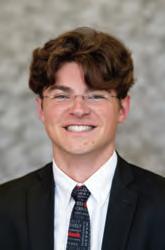
As per the Wabash College bulletin, Division I houses five departments: Biology, Chemistry, Mathematics, Computer Science and Physics. Division II is home to a whopping nine departments: Art, Classics, English, Modern Languages/Literature, Music, Philosophy, Religion, Rhetoric and Theater. Lastly, Division III consists of another five departments: Economics, History, Political Science, Psychology and Educational Studies.
One would logically think that the largest division would have a larger quantity of students enrolled in those majors, right? Wrong. Division I is sitting at 187 students enrolled, Division II has 185 students, and Division III has by far the most students at 243. So proportionally, Division III is roughly 1.3x the size of both Division I and II. Looking at these numbers, it would make sense that with their size, Division III would need the most attention. Yet, looking at a weekly event we all know and love, the help and attention given by Career Services seems to be almost entirely skewed towards one Division, and away from another.
What are two things that college students love more than almost anything? Coffee and free things. Combine them and you get Coffee and Careers. At Coffee and Careers, you can pick up your free coffee coupon and talk to a representative of an organization to learn more about what they do and what all they’re involved in. The only issue with it is that the diversity in types of companies Career Services brings in heavily favors the same people over and over again.
After looking through emails I’ve received regarding Coffee and Careers since my freshman year, there have been a minimum of 98 visits from organizations that have come to talk to Wabash students. Nine of those visits came from IU graduate programs talking about Business, Public/Environmental Affairs or Informatics; five came from Butler and their school of Business, another six came from Wake Forrest and their school of Business, and the other 78 came from similar companies or colleges. Nearly every single group that has come in to talk at Coffee and Careers has been in business, management, logistics or economics, other than the once in a blue moon visit from the Cancer Treatment Centers of America this February. Something that all these organizations share though, is that none of them have any relevance to students enrolled in Division II. There hasn’t been a priest from a seminary to talk to religion majors, there haven’t been any actors/performers to talk to people in the performing arts, and in a country with an increasing need for the use of foreign language, there hasn’t been anyone coming in to talk to foreign language students.
The list of majors that are negatively impacted by the lack of diverse organizations at Coffee and Careers goes on and on. If the issue Career Services has is the fact that they don’t know anyone in these fields, then a quick email to one of the 55 teachers found under Division II could help solve that problem. Instead, students just get asked the age-old question of “how does your resume look?” on their nth visit to the Career Services building. But hey, the one thing everyone can look forward to is senior year when they start to look at everyone the same way so they can hit their quota for career placement rate.
Yet, what really worries me about this cartoon is not the inadvertent message that it showed, but that everyone involved in the process of creating and placing this cartoon in the Bachelor failed to realize the inadvertent message of the cartoon in the first place, or worse, that they understood and approved of the message. It worries me that the “Student Voice of Wabash College” has the possibility to continue unknowingly propagating messages that undermine and discredit minority student’s hard work and accomplishments to nothing more than and only possible, because of their race. As someone who has experienced racial discrimination at Wabash, this incident has resurfaced my concern of not feeling safe or comfortable with my identity. I know I’m not the only one, and I know this feeling isn’t exclusive to just members of the Sphinx Club. Thus, this puts in question if the “Student Voice of Wabash College” will continue inadvertently promoting messages of condescending hate without really thinking of the effect it will have on minority students on this campus. I’m well aware that there are divisive opinions on this cartoon and not everyone will agree with me, even minority students. However, as a Wabash brother I feel the obligation to confront The Bachelor and inform the Wabash community, who may not understand why this cartoon can be offensive to some, why this cartoon was offensive. I hope and ask that, in the future, the Bachelor thinks further about the approaches they take when attempting to make a criticism and whether or not it will come at the expense of others.
‘Irrational Act’ Cartoon by Arman Luthra ’26
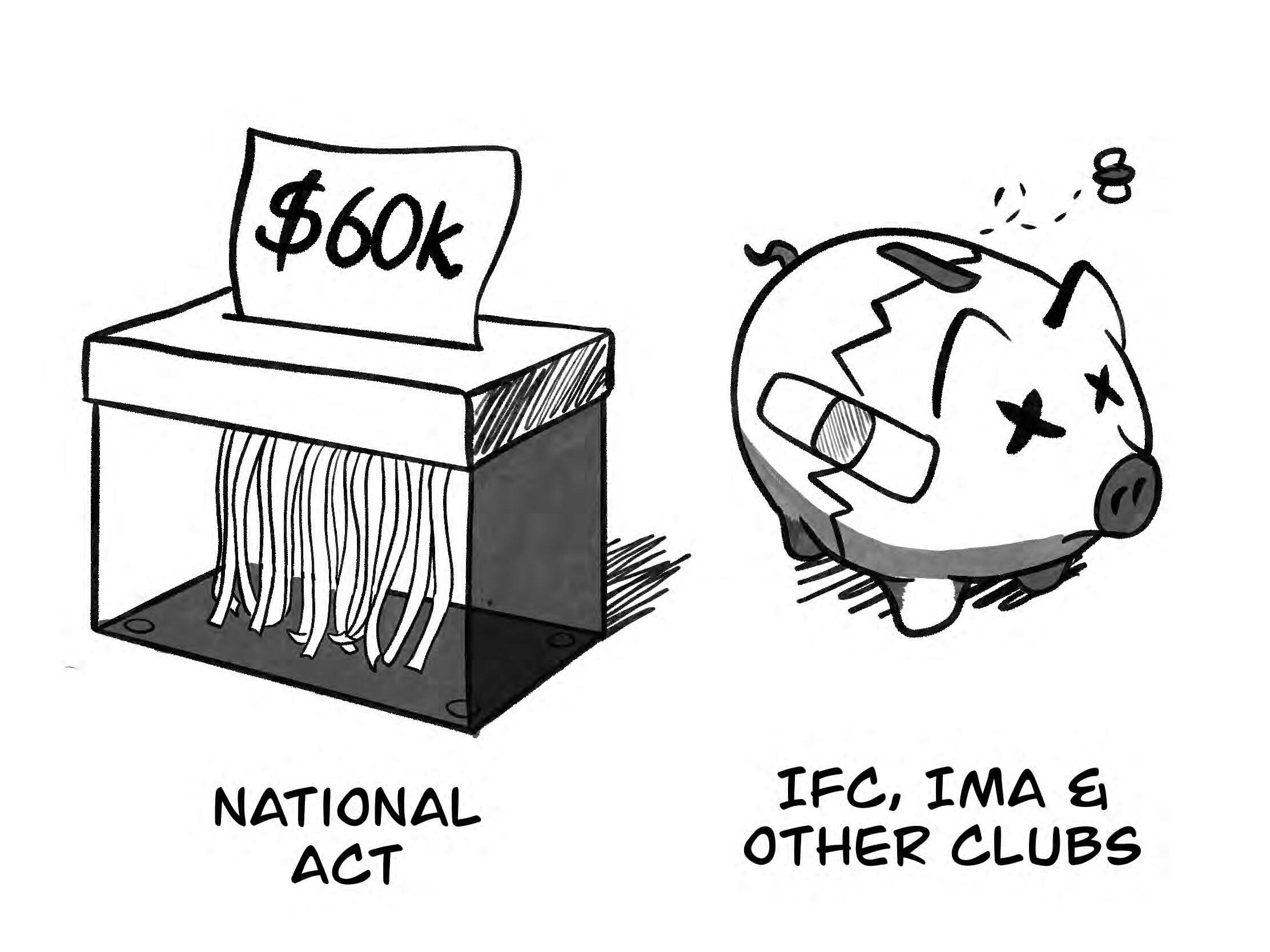
Francisco Jimenez ’24 Reply to this opinion at fajimene24@wabash.edu The inadvertent message of an understandable criticism
Reply to this opinion at
OPINION 4 | BACHELOR.WABASH.EDU | THE BACHELOR
Bevelheimer ’24 Reply to this opinion at cpbevelh24@wabash.edu
Cody
BACHELOR
301 W. Wabash Ave., Crawfordsville, IN, 47933

Twitter: @WabCoBachelor_
Instagram: wabashcollegebachelor
SENIOR EDITOR-IN-CHIEF
Cooper E. Smith • cesmith23@wabash.edu
JUNIOR EDITOR-IN-CHIEF
Sam Benedict • ssbenedi25@wabash.edu
MANAGING EDITOR
Jakob Goodwin • jmgoodwi23@wabash.edu
OPINION EDITOR
Andrew Dever • atdever25@wabash.edu

FEATURES EDITOR
Logan Weilbaker • laweilba25@wabash.edu
SPORTS EDITOR
Benjamin Bullock • bbulloc23@wabash.edu
PHOTO EDITORS
Jake Paige • jwpaige23@wabash.edu
Elijah Greene • eagreene25@wabash.edu
The purpose of The Bachelor is to serve the school audience, including but not limited to administrators, faculty and staff, parents, alumni, community members and most importantly, the students. Because this is a school paper, the content and character within will cater to the student body’s interests, ideas, and issues. Further, this publication will serve as a medium and forum for student opinions and ideas.
Although an individual newspaper, the Board of Publications publishes The Bachelor The Bachelor and BOP receive funding from the Wabash College Student Senate, which derives its funds from the Wabash College student body. Letters (e-mails) to the editor are welcomed and encouraged. They will only be published if they include name, phone, or e-mail, and are not longer than 500 words.
The Bachelor reserves the right to edit letters for content, typographical errors, and length. All letters received become property of this publication for the purposes of reprinting and/or redistribution. Profanity may appear in the publication, but only in cases of direct quote or if profanity is necessary to the content of the story. Please do not confuse profanity with obscenity. No article or picture of an obscene nature will appear in this publication.
The Bachelor is printed every Thursday at the Purdue Exponent in West Lafayette. It is delivered freely to all students, faculty, and staff at Wabash College. All advertising published in the Bachelor is subject to an established rate card. The Bachelor reserves the right to deny requests for publication of advertisements. Student organizations of Wabash College may purchase advertisements at half the listed rate.
The Bachelor is a member of the Hoosier State and Indiana Collegiate Press Associations (HSPA and ICPA).
Want uncontroversial reporting?
Don’t call a real journalist.
Take for example Gary Lineker, a British sportscaster who recently became embroiled in a feud with his employer, the BBC. Lineker, who hosts Britain’s most popular soccer show Match of the Day, was suspended by the BBC after posting a tweet critical of the U.K. government’s proposed bill that would essentially make asylum illegal. The BBC claimed that Lineker’s tweet violated their strict journalistic impartiality rules, despite the fact that Lineker was simply sharing a personal opinion on a personal Twitter account.

The BBC eventually rescinded Linkeker’s suspension, but not before triggering an unprecedented media spectacle. All of Lineker’s fellow hosts of Match of the Day refused to take part in that week’s show, the Professional Footballers’ Association (PFA, the union for professional soccer players in Britain) instructed its members not to give interviews with the BBC and a whole host of other broadcasters and news outlets came out in support of Lineker.
The whole debacle raised several questions about the integrity of the BBC’s journalistic standards. But at the heart of the discussions was a focus on the importance of impartiality in journalism.
The BBC committed a fundamental error when it sought to hold its journalists to unobjectionable news analysis. There is no such thing. When journalists speak truth to power, when they cover important, sensitive events, they are failing their obligations if they strive to write only those opinions that no one disagrees with.
Similar questions have been asked in recent months of popular news outlets such as the New York Times, especially with regards to the paper’s opinion section. For instance, in February 2023, the Times came under heavy pressure for allegedly publishing biased articles about transgender and gender nonconforming people. Critics took to Twitter, pointing out that the New York Times “hypocritically” published opinions with conflicting views.
There was no hypocrisy. That’s the
Will North Korea
pushed much of this out. The lack of influence from their surrounding nations has seemed to separate North Korea from Confucianist principles and turn to Juche Ideology. Juche is the self-reliance of man in political, economic and military issues. This also applies to the state where they have been chasing—but failing to reach— total self-reliance. This shift may lead to changes in the role of women in politics. Especially in regard to women, we are able to see this transition between the two ideologies most clearly when comparing Kim Jong Il to his son, Kim Jong Un.
HI-FIVES
FIVE THINGS WORTHY OF A HI-FIVE THIS WEEK
WE SHOULD’VE KNOWN
Lo-Five to Purdue for busting everyone’s brackets, losing to a team that literally should not have made the tournament. Figures that teams wearing black and gold blow big games.
OVERHEARD AT WABASH
Hi-Five to the Wally who called his roommate (we hope) to ask if he could invite “six chicks” over to their room. If he can, it’ll the fullest Phi Psi has been in months.
Y’ALL GOT ANY MORE OF THOSE WBC’S?
Hi-Five to the MLB for putting together a World Baseball Classic for the ages, capped off by Trout v. Ohtani. Imagine if an MLB team had the two best players in the world on it. They’d win the World Series every year, right?
Nuclear war, an irrational dictator and a 10-year-old girl. These three things have been at the top of the news for the Democratic People’s Republic of Korea (DPRK). In recent events, Kim Jong Un has been bringing his daughter, Kim Ju Ae, into the public eye. This brings about many questions, specifically if North Korea will have its first female supreme leader. Historically, there have been women with very large roles in North Korea. Currently, numerous women have risen to positions of political prominence. Based on this, I believe that it is possible or even probable that Kim Ju Ae could be next in line to lead North Korea.
Firstly, I think it is important to look at North Korean women that gained high political offices as well as high acclaim amongst their people. Early on, the Kim family had two notable women gain respect and political office. The first of which was Kim Jong Suk. Jong Suk was the first wife of Kim Sung Il and the mother of Kim Jong Il, but she was also involved in guerrilla groups. With her was Kim Hwak Sil, who was deemed the “Woman General.” Both of these women went to battle alongside the men to fight the Japanese occupation of the Korean Peninsula. Not much more is known about Kim Hwak Sil other than she fought the Japanese, because she and the other women she fought were often just called female guerillas and addressed without name. This new trend continued with Kim Song Ae, Kim Il Sung’s second wife who was named chairman of the Democratic Women’s Union. With this office, she handled issues pertaining to women in the country as well as meeting with foreign female representatives.
Although these women have left significant historical impacts, it was not always like this.
A large reason that this was not the norm is the geographic location of Korea. With Korea being in eastern Asia, they had a significant Confucianist ideology integrated into their culture. This presented an issue to female leadership as Confucianism values a patriarchal ruling system in the home and state. Although Confucianism was a heavy factor in the early years of North Korea’s formation, the DPRK has seemed to step away from this. This step away may have been caused by isolation and a new ideology may have
Kim Jong Il did not have a progressive outlook on women and, according to a September 25, 2020, article by Dr. Darcie Draudt, he never appeared in public with any of his wives or consorts. He would have preferred them to stay at home and tend to the children rather than having roles in politics or government. He would often keep his female partners in secluded residences. As I said earlier though, his son, the current leader of North Korea, Kim Jong Un, is leading the country in a different direction.
Kim Jong Un has placed women in very high positions including propaganda management, foreign relations and even military offices. Some of the most influential and involved women placed in power are Choe Son Hui, Hyon Song Wol, Kim Song Hye, Kim Yo Jong and Ri Sol Ju. Firstly, in direct contrast to his father, Kim Jong Un’s wife, Ri Sol Ju, has accompanied him in domestic political affairs as well as to summits. In 2018, Ri Sol Ju was named the First Lady of North Korea, the first such declaration since 1974. Within his family, Kim Yo Jong, Kim Jong Un’s younger sister, has stepped up and could be considered one of the most powerful people in the North Korean political sphere. She is the head of the propaganda department and is very outspoken in the media, especially in conversations about denuclearization and military matters.
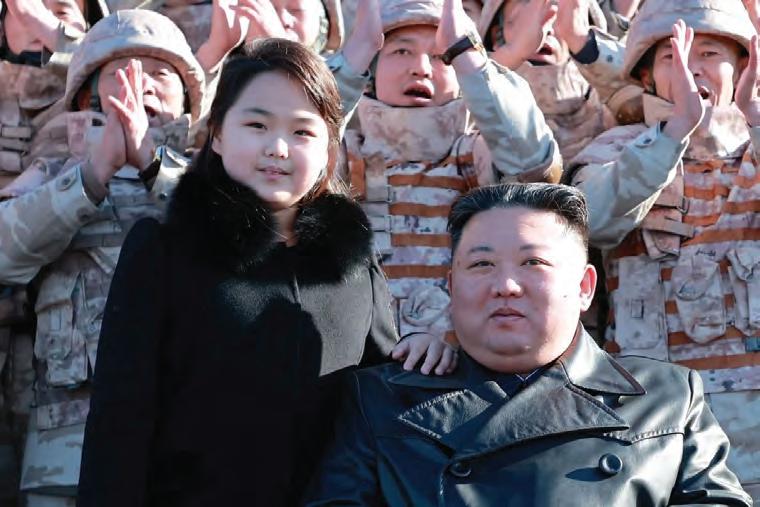
Additionally, while Hyon Song Wol is a popular musician in North Korea, she is also the vice director of the propaganda office. Choe Son Hui is the Minister of foreign affairs, and in this position, she has taken a leading role in relations with the United States. With this role, she has also been included in several nuclear weapons negotiations. Furthermore, Kim Song Hye is the head of the secretary bureau for the committee for the peaceful reunification of Korea. With this, she has been involved in numerous peace talks between North and South Korea.
Each one of these women have had very important roles in the survival of their nation. It is also notable that they each also have roles in assisting their nation to achieve the goals of Juche Ideology. As a reminder, the three principles of Juche are self-reliance in economic, political, and military matters. For economic self-
whole point of an open opinion section.
In an active, healthy democracy, citizens should make their voices heard. When they disagree with news coverage, or with a guest opinion, they should respond.
The crux of all these arguments is simple: journalism is meant to challenge. Opinion reporting relies on engaging with the most controversial debates and issues in our society. You aren’t always going to agree with an opinion, nor should you. Some opinions may even make you angry or uncomfortable.
That’s the whole point. If we take our role seriously as “The Student Voice of Wabash College,” we serve as a public square for discourse and debate. Any student can send in opinion columns; we welcome them, and we encourage them.
Wabash encourages and teaches us to think critically and impartially. We truly thank all of our guest opinion writers this year. Thank you for engaging with the vital campus exchange of ideas.
And to our anonymous critics on YikYak: keep it up—we only encourage you to join the debate publicly with the rest of your Wabash brothers.
“O BROTHERS, WHERE ARE THOU?”
Lo-Five to Admissions for scheduling more Admitted Student Days with even lower attendance. Though we can’t blame you for always scheduling them with the worst weather, we can and will blame you for forcing us to sit at student org tables to meet one single student.
SHINE BRIGHT LIKE A DIAMOND
Hi-Five to Doja Cat for announcing her recent downstairs decor. Even bedazzled, the Sig Chis still won’t be able to findpit.
female dictator?
reliance, we can look to Kim Yo Jong, because she has been placed on the State Affairs committee. This committee does what its name suggests and handles policy-making and other in-state actions including economic ones. As for political self-dependence, Choe Son Hui can be used as a great example. As the minister of foreign affairs, she has been involved in some of the most profound peace talks in the history of their nation, including denuclearization talks with the U.S.
Either of the women I just named can also be seen exemplifying their military self-reliance. Both of these women have taken strong stances against the United States and denuclearization, strongly against giving up their nuclear deterrents. These women earning important positions have opened the door for more women in
their nation to take up leadership roles. The shift away from the Confucianist ideology has placed women in many of the highest of political roles, but one has still eluded them. The position of the General Secretary (the supreme leader) of North Korea still has never been held by a woman, but Kim Ju Ae may be the first to take it. Early on there were barriers for women to earn leading positions in North Korea. Kim Jong Il was a major component of this difficulty because of his views of women. Although there was a regression of women in politics while Kim Jong Il was in office, Kim Jong Un brought women into political offices quickly. This shift leads me to believe that in the next 15-20 years we will see Kim Ju Ae at the head of the North Korean government.
COURTESY OF NEW YORK POST
have
first
THE BACHELOR | BACHELOR.WABASH.EDU | 5
Olive ’24 Reply to this opinion at wdolive24@wabash.edu Staff editorial: Gary Lineker, journalistic impartiality and the importance of divisive opinion columns OPINION COURTESY OF THE SOUTH CHINA MORNING POST
its
Will
The Foundation addresses mental health with new 'socially engaged' art initiative


LOGAN WEILBAKER ’25 | FEATURES EDITOR • Most students live in a constant routine. They travel the same paths, through the same doors, up the same stairs, to the same classrooms. It’s exactly that routine that The Foundation, a new on-campus artist collective, aims to disrupt with their new project. Walking around campus, it’s hard to miss the large, brightly-colored posters spouting bold, direct messaging— and that’s the point.
The Foundation was born out of Associate Professor of Art Annie Strader and Artist-in-Residence Hosey Corona’s ART-225: Art and Social Practice class, where the students have been studying an emerging art form known as “participatory” or “socially engaged” art, where the purpose is to engage in active communication with the audience.
For Prof. Strader, it was important that her students had personal stakes in the messaging they would convey with their art, so she let each student choose a unique topic.
“We realized that we were all thinking the same thing: mental health,” said Jonathan Gonzalez ’24. “So we decided to work together on a big project.”
And thus, The Foundation was born.
Inspired by the text-based artwork of artists like Chloë Bass, Barbara Kruger and Jenny Holzer, The Foundation chose to design
signs touting positive mental health messages to the Wabash community. Currently scattered about campus are bold messages like:
“It is in your best interest to be VULNERABLE”
“It is in your best interest to SLOW down”
“It is in your best interest to always HOPE”
“It is in your best interest to CONTINUE on”
“It is in your best interest to
BREATHE with intention” and more.
Placed in conspicuous locations like stairwells, elevators and hallways without a history of displaying artwork, and coupled with the large font and neon colors, the artists hope to cause Wabash students to stop and reflect on what their best interest really is, instead of living each day monotonously. But this is not the first time new signage has popped up around
campus. The COVID-19 pandemic had lasting impacts on mental health, but also on classrooms and hallways. still adorned with leftover directional arrows and symptom guideline posters. An additional focus of The Foundation’s project is to address the negative impacts on mental health due to the pandemic by changing the connotation of signs around campus from negative to positive.
“To think, what was once there [in Hays Hall] was probably a sign saying ‘stand six feet apart’ or ‘wear a mask,’ and now there’s one telling you to breathe with intention,” said Prof. Strader.
The “it is in your best interest” posters will be on display around campus through the end of March. Having designed them and hung them up, The Foundation turned their attention back to socially engaged art.

“We realized we had been inserting our opinions, but we hadn’t asked other people what they thought was in their own best interests to do,” said Gonzalez. They are currently in the process of asking for advice from students regarding self-care practices, which they will integrate into the project going forward.
As part of the $4.5 million “Restoring Hope, Restoring Trust” grant, one goal of the class is to connect the Wabash community to the broader Crawfordsville community. The Foundation plans to accomplish this by using the April 1 De Nosotros Para Nosotros event at Pike Place to talk with members of the Crawfordsville community and get a broader perspective on mental health issues and help bridge the gap between campus and Crawfordsville.
“It’s all about bringing people together through art,” Prof. Strader said.
Senior spotlight: Eric Zhu '23 and his winding path
RYAN
PAPANDRIA ’25
| STAFF

WRITER
• This week The Bachelor is spotlighting Eric Zhu ’23. Zhu was born and raised in China before moving to the United States when he was fourteen years old. He then lived in New York and California before arriving in Crawfordsville to attend Wabash. Eric majors in financial economics and has held a position in the Audit and Finance Committee (AFC) of Student Senate and President of the Investment Club.
When searching for a college after high school, he knew that the small campus, liberal arts experience would suit him well.
After speaking with admissions counselors and visiting multiple times, Zhu vividly remembers “how friendly the admissions counselors, professors and all the people he stayed with” were.
Following his visits to campus, Eric recalls just how easy it was to connect with the professors at Wabash. “There were so many academic opportunities and I realized how easy it was to make connections with the professors,” said Zhu.
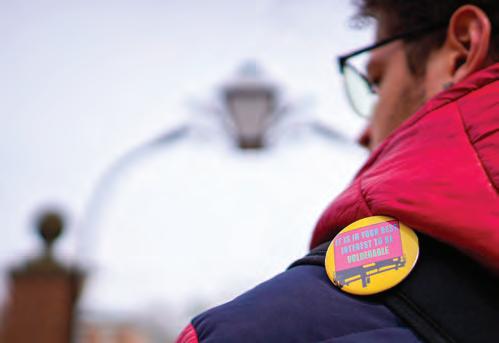
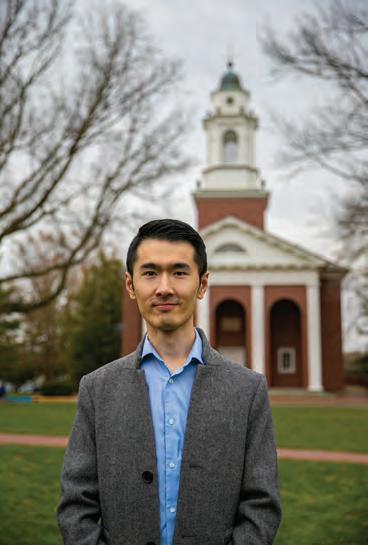
He notes a couple of professors in particular that shaped him and his future. Despite coming into Wabash interested in the pre-medicine track, Zhu notes that he particularly found an interest in economics after taking Dr. Dunaway’s economics 101 class. “He really introduced me to the field of economics and what it has to offer,” said Zhu. “And at that point, I switched my major.”
He also recognizes Dr. Mikek as an important figure in his Wabash experience. Not only does Zhu appreciate the macroeconomic theory he learned while taking Mikek’s class, but also the “many life lessons” Mikek taught, “like when to take a break, how to manage stress and building connections.”
Zhu was not always very involved and tended to stay within his own inner circle. Before enrolling at Wabash, Zhu claimed to be more introverted and liked to keep to himself.
“In high school, I was too afraid to take initiatives and apply for leadership
positions,” said Zhu.
Once at Wabash, though, he decided to make a change for himself. “I had a great group of friends in my first semester at Wabash that helped me build confidence and a more positive self-image. I was able to not only step out of my comfort zone, but expand it.”
All these life experiences have led Zhu to be who he is today. As for what is ahead of him in his future, uncertainty looms. Regardless, Zhu does not and should not worry.
“I used to be adamant about immediately entering the job market after graduation,” said Zhu. After a recent economic downturn, however, “I am deciding whether I want to pursue further academic education in economics or finance or enter the job market. I am preparing for both routes.” Whichever decision he chooses, one thing is certain. “I will apply my critical thinking to what paths that I do have,” said Zhu.
PHOTO BY JAKE PAIGE ’23
6 | BACHELOR.WABASH.EDU | THE BACHELOR FEATURES
PHOTO BY ELIJAH GREENE '25
PHOTO BY JAKE PAIGE '23
In Hays Hall, a message to "breathe with intention" hangs where pandemic signage once was.
PHOTO BY JAKE PAIGE '23
The Foundation plans to make buttons featuring the self-care advice they receive from students.
PHOTO BY JAKE PAIGE '23
Hanging in conspicuous, unordinary places causes passersby to stop and self-reflect.
Review: 'Creed III' No Rocky? No problem
ELIJAH GREENE ’25 | STAFF
WRITER
• The recent addition of "Creed III" to the world’s mostbeloved fighting franchise, the Rocky-Creed saga, has professional critics raving, saying that it is “the best Creed film yet.” As an avid "Rocky" and "Creed" fan, I was skeptical at first. Firstly, recency bias can make every new movie in a series “the best yet” without first stepping back to take stock of the movie's influence on the franchise as a whole. Secondly, how could a franchise—built almost entirely on the shoulders of Rocky Balboa, the legendary character played by the acting behemoth Sylvester Stallone—possibly have its best movie not include the iconic actor? And thirdly, could the critics actually be right?
This is the first "Creed" movie directed by its lead actor, Michael B. Jordan. Jordan has played protagonist Adonis Creed since 2015 when the first "Creed" movie aired, but has stepped into a larger creative role within the franchise. And it shows.

Regardless of the plot, Jordan’s choice of boxing cinematography in "Creed III" is, in my opinion, the best ever. The personal feel of only using two or three camera angles, and not shooting through the ropes or from above, gives the viewer almost a sense of virtual reality, placing them squarely within the action, feeling every punch landed by the boxers.
Also, razor-sharp definition and portrait-style shooting was a refreshing change from the gritty, more realistic UFC-style cinematography displayed by both previous films.
I am sure the feeling was chosen intentionally by Jordan, as the plot revolves entirely between Creed and friend-from-the-past Damian Anderson (Jonathan Majors). The emotionally tortured past life in
an abusive group home shared between the two characters serves as the motivation for the final showdown that puts an exclamation mark on the end of the film.
The conflict is convoluted, since there is no real “good vs. evil” matchup that makes the audience love one character and hate the other. Both men are products of their circumstances, one fallen on the wrong side of fate and the other not. Creed feels shame and guilt for not maintaining a relationship with Anderson while he was in prison, leading to the animosity between them when Anderson gets out of prison. This animosity is eventually resolved after Creed wins the duel, as anyone could have guessed.
But the conflict isn’t what makes this film memorable. Historically throughout the Creed franchise, Adonis Creed has had difficulty giving voice to his emotions and must spend many minutes of screen time in introspection during each film. However, in "Creed III", this internal conflict comes to a head, and Adonis must finally begin sharing his emotions with his now-wife Bianca (Tessa Thompson). A continuously growing relationship in the franchise, Bianca has grown from friend/girlfriend to fiance to wife in each respective movie. She becomes the fulcrum that tips the lever of Adonis’s emotions and forces him to share and confront his past. This self-confrontation helps finally mature Jordan’s character, a trait much soughtafter by fans of the franchise.
But where is Rocky Balboa?
Stallone decided, after reading "Creed III"’s script that “it was taken in a direction that is quite different than I would’ve taken it. It’s a different philosophy.”
Stallone, a self-proclaimed sentimentalist, did not like the

















darker source material that Jordan wanted to implement. So, no Rocky. I don’t necessarily think that the movie is missing Rocky. Personally, I felt that the tropes and character arcs that are associated with Rocky Balboa have sufficiently run their course and aren’t really needed to drive the plot forward in this franchise. Rocky isn’t a very dynamic or complex character in the first place. In fact, he’s notably unintelligent, getting by on sheer grit and will. While those are commendable attributes, there are only so many ways to spin that story before it becomes trite. So not including Stallone’s character was, in a way, quite refreshing and allowed the directors more creative liberty in the plot, which I think made for an excellent movie. It felt very different from any other "Rocky" or "Creed" movie to date.
To address the final point—were the critics right? In a way, yes! I think that this "Creed" movie had plot points and thematic elements that skyrocket above and beyond other movies in the franchise, not to mention the stunning boxing cinematography. This movie relied entirely on close-up portrait shots of actors, almost exclusively above the waistline. This thematic choice was noticeable and drew focus and emphasis on the internal struggle happening within whoever was in-scene. It also allowed the flashbacks that happened periodically throughout the movie to feel as if the audience was being transported into the mind of the character, creating an immersive experience.
But do I think it’s the best "Creed" movie yet? Probably not. As much as I enjoyed this movie, it simply cannot be the best without Stallone. Rocky Balboa has built this entire franchise for over 40 years and the best movie simply can’t not have him in it. Purely for that reason, this movie cannot be the best. It is incredibly well done and an exceptional addition to the franchise, but it is not the best yet. With "Creed IV" being confirmed by Jordan recently in a press conference, we will have to wait and see what is in store for Adonis Creed next.
LOGAN WEILBAKER ’25 | FEATURES EDITOR • Pornhub is one of the most recognizable brands in the world. Whether from seeing the iconic orange and black or hearing the distinct opening drum riff, everyone on the internet knows Pornhub. As such, it’s no wonder there’s been so much talk about the latest Netflix documentary exposing the questionable behavior of the most trafficked website in the world.
Is it possible for all that traffic to exist without trafficking?
That’s where “Money Shot” comes in: at the intersection of legitimate, consenting sex work and sexual assault and rape, recorded and immortalized on tube sites.

For those hoping to watch this documentary alone in their room with a box of tissues, fair warning: the intention of “Money Shot” is not to keep you up to date on your favorite performers. It is a serious investigation into the serious criminal offenses made possible by Pornhub and the porn industry.
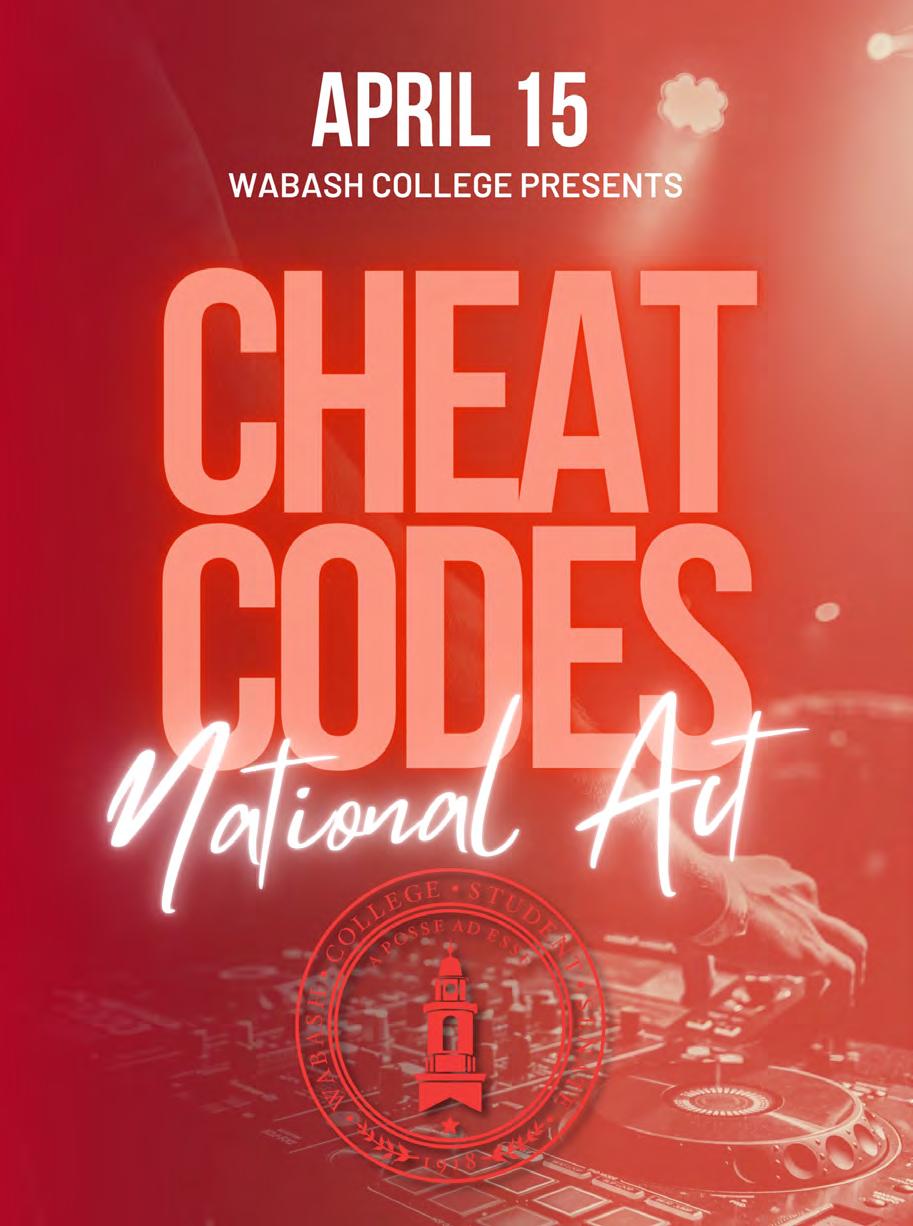
The situation is obviously a sticky one. There are individuals for whom selling content via Pornhub is their primary source of income. These individuals participate willingly, and would not categorize themselves as victimized by their participation in such content. There are other individuals, however, who are victims of abuse that was not only a horrifying experience, but now must relive their experience while fighting to have that content removed from porn sites time and time again.
Is the solution to shut down pornhub altogether? That’s not likely to happen. Then should Pornhub be allowed to go unchecked? That has problems too. The answer, of course, is
somewhere in between. But finding the right balance is unsurprisingly difficult to do.
What I like the most about this documentary is that they don’t take a hard stance on either side. There is a lot of representation from both sides of the issue— porn performers, former and current porn executives and antiporn activists—and their agendas are very clear, so it leaves the final decision in the hands of the audience.
There’s some really eyeopening information dispensed throughout, and it will likely make viewers reconsider what they previously thought about porn, but the bigger issue with the porn industry is that it’s a subset of the wild, wild west that is the Internet. The Internet is still in its infancy, compared to other industries that have gone through centuries of trust-busting and regulations, so the world’s biggest internet companies like Meta, Alphabet and, yes, Pornhub are allowed to operate completely unchecked. And the documentary doesn’t address those larger problems until the very end of the film.
It’s a good documentary and worth the watch, but if you are interested in discussions of selfregulation issues and exposés on the abuses of monolithic tech companies, I strongly suggest you watch Netflix's much better 2020 documentary “The Social Dilemma.”
JAKOB GOODWIN ’23 |
MANAGING EDITOR • After a fouryear gap between projects, Andrew Hozier—better known just by his last name—re-emerged from the Irish folktale he lives in to drop a three-track EP “Eat Your Young,” a preview of his upcoming album “Unreal Unearth” that will allude heavily to Dante’s Inferno, the first part of Dante’s Divine Comedy.
Like most of Hozier’s music, "Eat Your Young" includes commentary on politics, society, religion and sex, all weaved together in a folk style that hides these themes in incredible music and vocals while allowing listeners to dig deeper if they want.

On the surface, this 11-minute EP is radically entertaining, with each song bringing a new, but fun, sound.
With “Eat Your Young’s” light drum beat and background strings, this song is an easy listen that touches on sex and alludes to Dante’s third circle of hell: gluttony. Between the verses on food and literally eating, the choruses’ lyrics allude to a more sinister and systemic consumption:
“Come and get some, skinnin' the children for a war drum, puttin' food on the table sellin' bombs and guns, it's quicker and easier to eat your young”
“All Things End,” with its differently light drums and gospel feel is a clear showing of Hozier’s inspiration in Black gospel music traditions. This song, alluding to Dante’s sixth circle of hell, which discusses heresy, sends mixed messages through its chorus.
“And all things end, all that we intend is scrawled in sand and slips right through our hands.”
Some have read this to be a reassuring message that life’s problems are fleeting and to live in the moment, as all things will come
to an end. I hear an existentialist cry that life has little meaning and our actions have little effect, advocating for the liberating, godless hedonism that lands you in Dante’s sixth circle.
“Through Me (The Flood),” even without inspiration from the Divine Comedy, is haunting and beautiful. Again with great drums, but with an organ that I imagine plays in ghostfilled mansions, this song touches on themes of loss and struggle in a romantic way that is intoxicating.
Hozier’s Irish accent is on full display on this track and it enhances the sound, providing another level of depth to this track that includes guitars, organ, other strings and tambourine.
Hozier is an incredible lyricist, with each of these songs written like poems to a lover, a friend and a lost relative, but his performance pushes this short EP to a high level. I cannot wait until he drops “Unreal Unearth” later this year.
FEATURES
Review: 'Money Shot: The Pornhub Story'
THE BACHELOR | BACHELOR.WABASH.EDU | 7
Review: Hozier took us to hell, and I loved it
COURTESY OF NEW YORK POST FINAL VERDICT: 4.5/5 WALLYS COURTESY OF NETFLIX FINAL VERDICT: 3.5/5 WALLYS COURTESY OF PEOPLE FINAL VERDICT: 5/5 WALLYS
Games by Logan Weilbaker ’25
Word ladder
Turn the top word into the bottom word by changing only one letter at a time. For an extra challenge, try to get the optimal number of steps.
'Spring has sprung'
Scan for solution!

At the crossroads
Fill in the crossing boxes with letters that will complete a word vertically and horizontally. When entered correctly, they will spell out the answer the riddle below.
Word waterfall
What
Place the letters given below each diagram into the squares to form eight four-letter words reading from top to bottom. The top letter is the first letter of all eight words, each letter in the second row is the second letter of four words and so on.


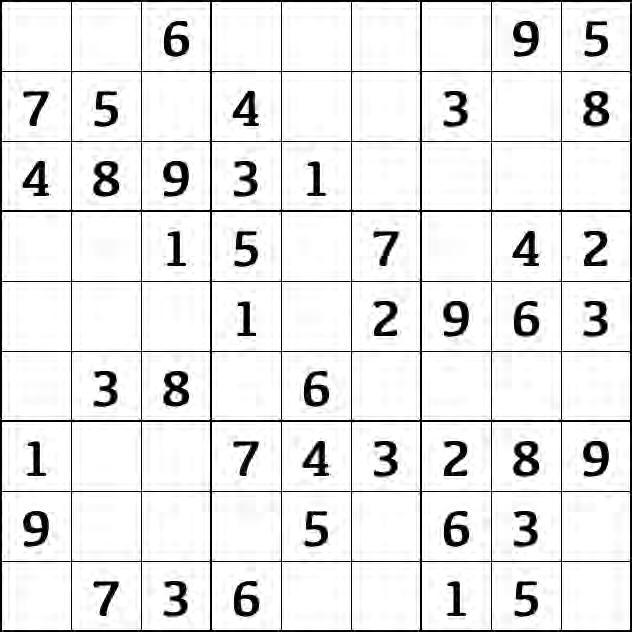
Answers
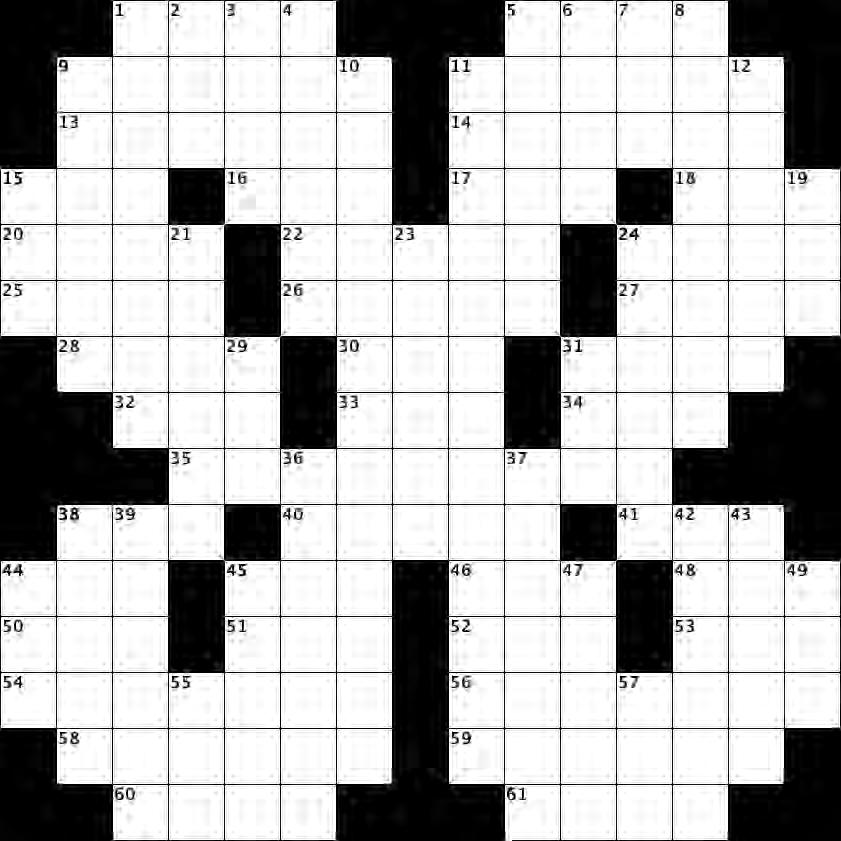
Across 1. "Your ____" 5. Style, in modern parlance 9. Party animal? 11. Snowman-building locale 13. Worth having 14. "Sorry to ____" 15. Controversial initials in modern education 16. Put away dishes? 17. Took a test 18. Feller's tool 20. A long, long time 22. "M*A*S*H" episode, nowadays 24. Apt name for an AV specialist? 25. Out of shape 26. What's going on 27. Fit 28. Blood bank supply 30. East of Eden 31. Battle buddy 32. Cosa Nostra leader 33. Copycat 34. Woodland spirit 35. Springtime symbol represented visually by this puzzle 38. Bow or bolo 40. Dentist's order 41. D.C. VIP 44. "You hate to see it" 45. Tyler of the "Lord of the Rings" movies 46. "Mom" on a bicep, e.g. 48. Like FDR's deal 50. Easy as ____ 51. Cooler cooler 52. Oklahoma native 53. Logical start? 54. Apparel that might accompany a pumpkin spice latte 56. Al fresco 58. Grumpy friend 59. Unplugs, maybe 60. "All My ____" (Miller play) 61. "Who ____?" Down 1. Got an earful 2. Bill in a tip jar 3. Ump's call 4. "Little" literary mouse 5. Downward-sloping line in an economics graph 6. Awestruck 7. Wedding promise 8. Part of ASAP 9. Cleans house 10. "Or..." 11. Like many teens, in their own words 12. How an unconvincing argument is presented 15. 18-wheeler part 19. "This ride is fun!" 21. Cause for some photosensitivity warnings 23. Get back to business? 24. Kuala Lumpur natives 29. Babylonian sky god 31. Oilers’ org. 36. Bench dip targets 37. Special article in publication 38. Quarter back? 39. Paragons and paradigms 42. V-8, e.g. 43. Essential things 44. Sunblock stat 45. Flaxen fabric 47. All-in-all 49. "____ is me!" 55. "The Matrix" protagonist 57. Member of the fam GAMES
8 | BACHELOR.WABASH.EDU | THE BACHELOR
Easy Medium Hard Sudoku
Complete the grid by entering one number in each square so that each row, column and square contains the numbers 1–9 only once
WORK (3 steps)
TIME (5 steps) GOLF CART (5 steps) SAVE LOAN (5 steps)
DONE
JAIL
ST BA SS
do you buy for dinner but never eat?
Example: 1: 2: B AU RLR L E K N BARE, BARK, BALK, BALL, BULK, BULL, BURL, BURN T M I N A R E T E BM D S E L E O T S H LY SE BE GE RE CL FI GY CE PE HA IS ED CO IN NE DE
At the crossroads: SI LV ER WA RE Word waterfall: (1) BEET, BEEN, BEAN, BEAT, BRAN, BRAT,
BRIM (2) MESS MESH, METH, METE, MOTH, MOTE, MOLE, MOLD
BRIT,
SPORTS
Everson ’26 and Patton ’23 lead Little Giants into home opener
Baseball returns to Crawfordsville
JAKOB GOODWIN ’23 | MANAGING EDITOR • he Wabash baseball team dropped a three-game series to Hanover College last weekend, winning the final game 5-4 to avoid a sweep. That win brought their record on the year to 11-6 going into a series against Illinois Wesleyan University including the home opener on Sunday, March 26.
The first half of this season has been defined by an NCAC leading battery, pitcher Caleb Everson ’26 and Liam Patton ’23, who have both won NCAC player of the year awards already. Everson picked up his second NCAC Pitcher of the Week award two weeks ago with an eight IP performance, continuing his dominant year.
“I think my success this year stems from the strength of our defense as a whole,” said Everson on his own success this year. “Every time I‘m on the mound my goal is to throw as many strikes as possible in order to give the guys in the field the chance to make plays, and they do. The entire infield has been consistent and solid, and we have speed in all three positions of the outfield. Knowing that you can throw the ball in the zone and trust that plays will be made is huge.”
As humble as Everson is about his own performance, he has performed incredibly, and his coaches and teammates know it.
“Caleb has shown us exactly what we expected from him,” said Head Baseball Coach Jake Martin. “He is a competitor. He challenges hitters and has the ability to command multiple pitches for strikes. He’s worked to improve controlling the running game, and that has paid off. Caleb is also a great team guy, and he is developing into a great leader. All of those reasons
are why we recruited him. I’m excited to see him grow as the season progresses.”
And his batterymate, Patton said more of the same, specifically praising his changeup, saying it was a “nightmare for hitters.”
Everson attributed some of his own success to Patton and his lights-out performance behind the plate.
“[One] thing that has helped is having great leadership behind the plate. I have been throwing to Liam Patton mostly, and he does a great job commanding our defense and pitching.”
Patton is hitting .436, with a hit in every game this year except for the most recent game against Hanover, bringing 17 RBI and seven doubles in 14 games into the series against Illinois Wesleyan, who sits at 4-8. Despite that record, the Little Giants aren’t underestimating the Titans.
“Currently their record might tell a different story, but IWU is a great baseball team,” said Patton. “It’s a good program and a good chance for us to show off the work we have put in this offseason.”
As a team, the Little Giants are hitting .318 and are getting on base at a clip of .418. AJ Reid ’24 is destroying baseballs, already amassing five home runs, two triples and six doubles in 17 games while getting on base more than 55% of the time and carrying a team-leading 1.364 OPS.
And as Everson (3-0) has emerged as a leading arm for the Little Giants’ starting rotation, Henry Birk ’26 has been excellent out of the bullpen in relief, pitching to a 2.25 ERA in eight innings, surrendering only two earned runs via the long ball, but limiting baserunners overall with a .75 WHIP.
The Illinois Wesleyan Titans are led by a trio of Jalen Ping, Louis Perona and Evan Hutson who are collectively hitting .432/.447/.612 with 50 hits and 27 RBI through 12 games. Dalen Banks (3-0) leads the Titans’ rotation, pitching to a 2.35 ERA and 1.30 WHIP and Josh Ralston leads the Titans’ pen with a 0.00 ERA and .35 WHIP in five appearances.
The Little Giants look to remain hot before NCAC play opens up against Illinois Wesleyan this weekend. The Little Giants travel to Bloomington, Illinois for a doubleheader on Saturday, March 25 before hosting the Titans on Saturday, March 26 at Goodrich Ballpark for the first home game of the year.
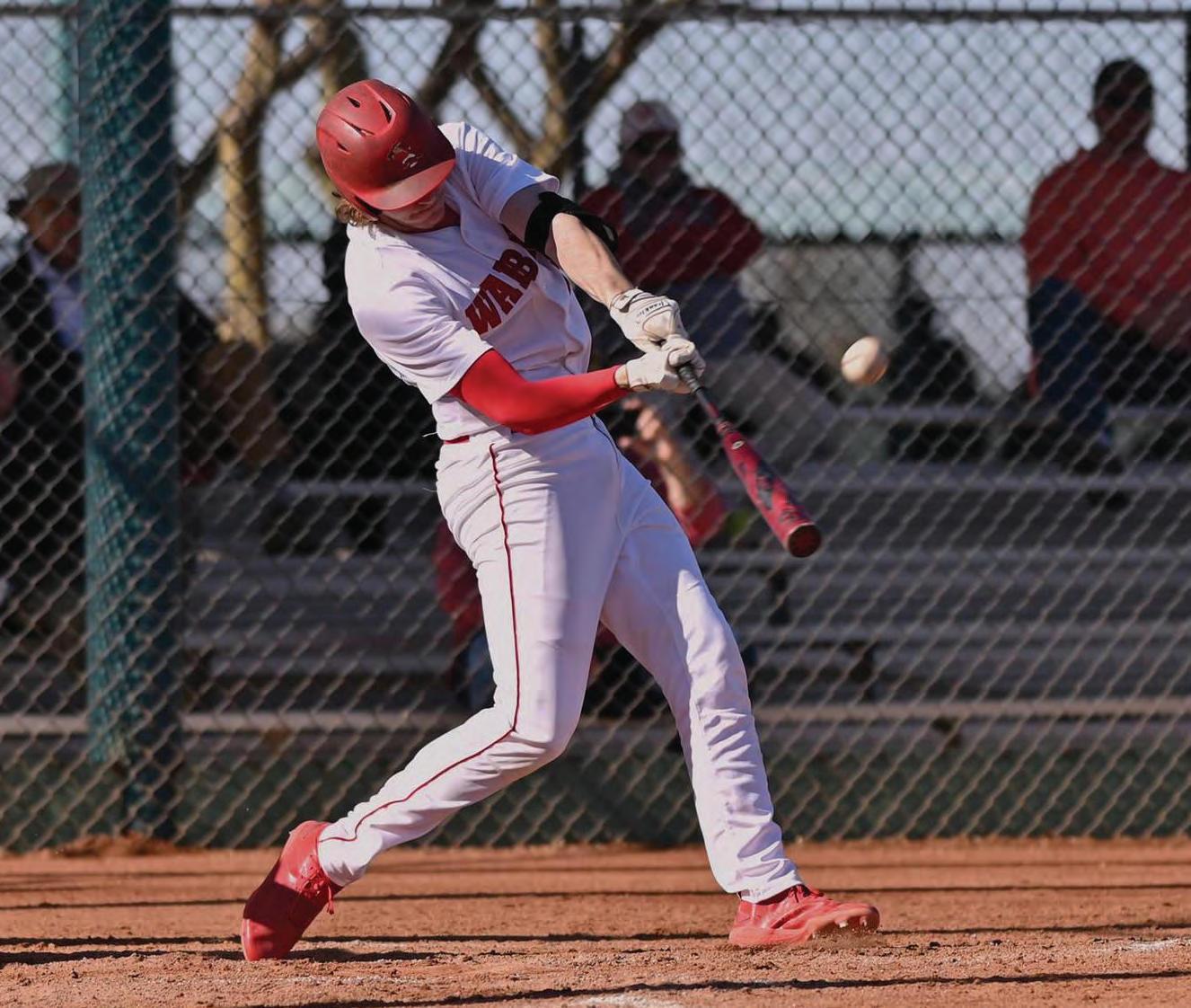
COMMON BASEBALL ACRONYMS AND STATS
In this piece and throughout our baseball reporting, our writers refer to a set of baseball-specific acronyms. Here is a collection of the most common:
ERA: Earned Run Average.
Number of earned runs given up by a pitcher per nine IP. An earned run is the pitcher‘s fault. If a baserunner reached on an error, it is an unearned run.
IP: Innings Pitched
WHIP: Walks + Hits per Innings Pitched. How many baserunners allowed per IP.
BB: Walks
SO/K: Strikeout
AVG: Batting average
OBP: On Base Percentage
SLG: Slugging Percentage.
Total number of bases per at-bat.
OPS: OBP+SLG: Total number of bases per plate appearance. (This includes walks, SLG doesn‘t.)
AB: At Bat. Plate appearance that ends in a hit or out PA: Plate appearance: any appearance, including walks.
Greene: Lacrosse refocuses, recalibrates heading into conference play
ELIJAH GREENE ’25 | SPORTS
COLUMNIST
• After their final non conference competition against Hanover College on Saturday, March 18, the Wabash lacrosse enters the second half of their season sitting at a comfortable 6-2, the most wins by any lacrosse team in Wabash history. Coaches of Wabash past would have been overjoyed to have such success in a single season. But Head Lacrosse Coach Chris Burke has different goals in mind for his team.

“Ever since Virginia Wesleyan, I don’t think we’ve played our best ball,” said Burke. “We haven’t played a game since then where we have put together what we’re supposed to do on the field. We have had a lot of great individual efforts, but that hasn’t been our game.”
Those individual efforts have varied from game to game. But attacker Ethan Stonis ’23 has been leading the charge for the Little Giants in recent contests. In the game against Hanover, Stonis led the team in goals (four) and also bagged an assist, making him Wabash’s player of the game.
But when building a program that can consistently win year after year, just being good isn’t good enough. Attention to detail is key. Hyper-scrutinizing commonly made mistakes can often make the difference between winning and losing with a young team like Wabash. And the players are beginning to drink the Kool-Aid.
that defense wins championships, so a good team game against Hiram will start with the back line.
Starting defenseman AJ Miller ’23 understands that the game plan for complete team performance is simple: do your job.
“It hasn’t been too much of a shift,” said Miller, when asked about the change in team philosophy when Coach Burke took over the program. “The only thing Burke asks of us each day is to do our jobs. If we do that, then we’re able to win.”
As a defenseman, Miller said that his job is to “stay hidden” and that “our whole entire job is to not make a mistake, because [lacrosse defense] is a constant rotation.”
“It’s good that the guys are seeing [their mistakes] because that’s our standard,” said Burke. “We should play the game the right way, the way it’s been coached to us, and make adjustments. So when we go to play Hiram, our main focus is us. Let’s get back to trusting each other and have a good, team game.”
Anyone who plays sports knows
Controlling and dominating this constant rotation is one of the keys to a Wabash win and essential if Wabash wants to win more games in a tough lacrosse conference.
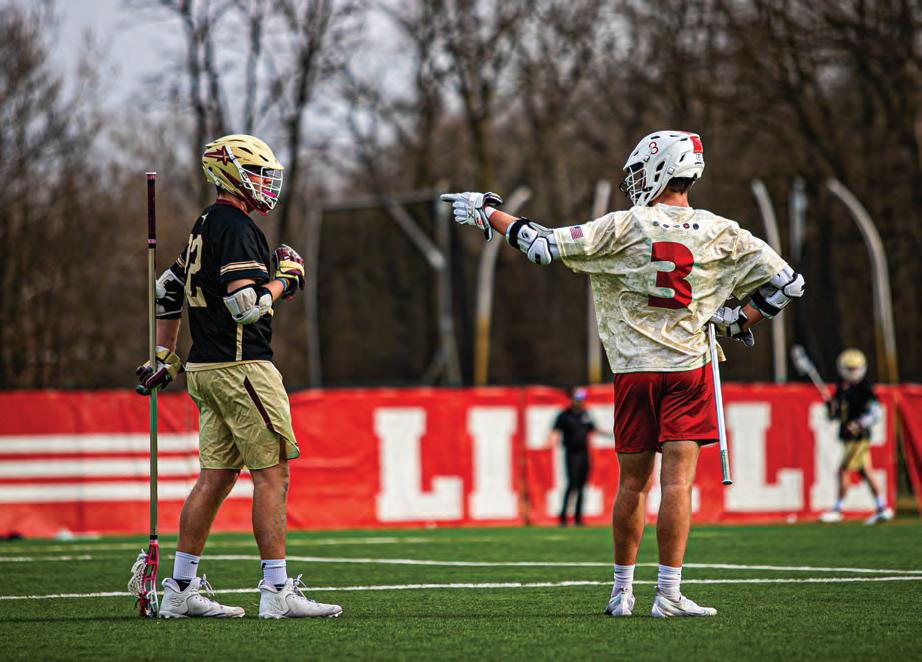
And win they will. Wabash opens its difficult conference schedule against perennial bottom-of-theconference Hiram on March 25. A game that Wabash has historically won, no Wabash fan, myself included, expects anything except a W on the scoresheet after Saturday.
“This is a very winnable game,”
said Quinn Fitzgerald ’26. “But we have to make sure that we’re honing our skills before we get into the really tough part of our schedule. After next Saturday, we’re going to find out what we’re made of. But this week, it’s about dialing
everything in and making sure that we’re good to go so we can hit the ground running once we get deeper into conference [play].”
No one expects Wabash to lose this game, but it presents a unique opportunity for the team to refocus
and recalibrate before the Little Giants’ schedule begins to toughen considerably.
Ironically enough, this tougher schedule may allow Fitzgerald to shine more on this Wabash squad. The Indianapolis native and Brebeuf graduate has been all but smothered in the past several games by defensemen on the opposing team, barely letting him touch the ball. The reason? Fitzgerald is one of the most talented players on the team, if not in the conference. Giving him any space with the ball almost always ends in a point for Wabash.
A DII transfer to Wabash, Fitzgerald is a notable anomaly. Transferring away from a scholarship program such as Florida Tech to play DIII lacrosse for, historically, one of the worst teams in the NCAC seems a bit of a head-scratcher for most astute Wabash fans.

But Fitzgerald has no qualms.
“I put lacrosse in the backseat when I made this decision,” said Fitzgerald. “The culture in Melbourne [Florida] just wasn’t for me. I knew that I needed to get out and be a part of something bigger than myself. I needed to be more fulfilled.”
So Fitzgerald looked back to his home state for options. Luckily, his cousin Caulin Fitzgerald ’24 lobbied for him to attend Wabash. “[Caulin] was recruiting me here, big time,” said Fitzgerald. “He’s a very, very, very large reason why I’m here. He’s been my best friend for 20 years, so I knew that if he loved it here, then I would too.”
And Wabash has been nothing but grateful. Through the first half of the season, Fitzgerald is second on the team in goals, assists, total points and shot percentage. He also tied the all-time NCAA record for goals in a single game (13) against Concordia University Chicago earlier in the season. Even in his short tenure, Fitzgerald has already proven that he more than belongs at Wabash.
With the team refocused and recalibrated, Wabash looks to defy all expectations during its upcoming conference season. Not overlooking Hiram, but winning the game they are supposed to win this Saturday will help set the tone for the Little Giants as they look forward to the rest of their 2023 NCAC battles.
PHOTO BY ELIJAH GREENE ’25
THE BACHELOR | BACHELOR.WABASH.EDU | 9
Quinn Fitzgerald ’26 has a verbal altercation with his opponent against Hanover College on March 18, 2023, at Fischer Field.
COURTESY OF ZACHARY LUCY PHOTOGRAPHY
Liam Patton ’23 takes a swing against Hanover College on March 18, 2023, at the K.T. Young ballpark.
PHOTO BY ELIJAH GREENE ’25
Sam Miller ’24 (center) locks in as he comes out of the breakdown against Hanover College on March 18, 2023, at Fischer Field.
“After next Saturday, we’re going to find out what we’re made of. But this week, it’s about dialing everything in and making sure that we’re good to go.”
- Quinn Fitzgerald ’26
Return to sender: Small ’25 claims MCVL Player of the Week
Volleyball hunts for elusive first conference victory of the season
ETHAN WALLACE ’25 | SPORTS
WRITER
• Zachary Small ’25 has been an integral part of the Wabash volleyball team’s back line from the season’s start. But since moving to the libero position, he’s become one of if not the most important defensive player on the team. And on March 14, Small’s efforts were rewarded when he earned the Midwest Collegiate Volleyball League Defensive Week Eight Player of the Week.
“It felt great to have my hard work and play recognized,” said Small. “I feel like I was able to support our offense by receiving well in our game against Mount St. Joseph, but I really have to thank my blockers for being so easy to defend behind in our games against both Wittenberg and Mt. St. Joseph.”
Against Wittenberg and Mount St. Joseph University on March 10 and 11, Small put up 35 digs with only two reception errors. Twenty three of those digs came against Mount St. Joseph, setting a new school record in a four-set match.
“Small had a huge first week playing in the conference,” said Head Volleyball Coach Ryan Bowerman. “He‘s stepped into that libero role in the last month for us and he‘s doing a great job. Zach [Small] brings tons of energy to the floor—he‘s a great energy guy. He really understands the game and sees a lot of what‘s going on. And his vision on the court and his aggressive defensive mentality has kept us in some games.”
In the team’s most recent match against Fontbonne University on March 18, the Little Giants fell in four competitive sets. It was a slow start for Wabash, losing the first set 25-16. But the team came back

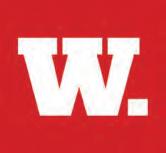
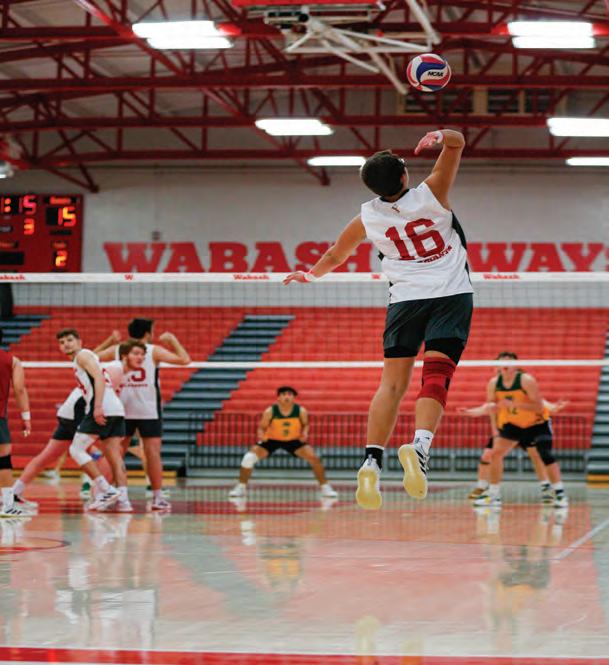


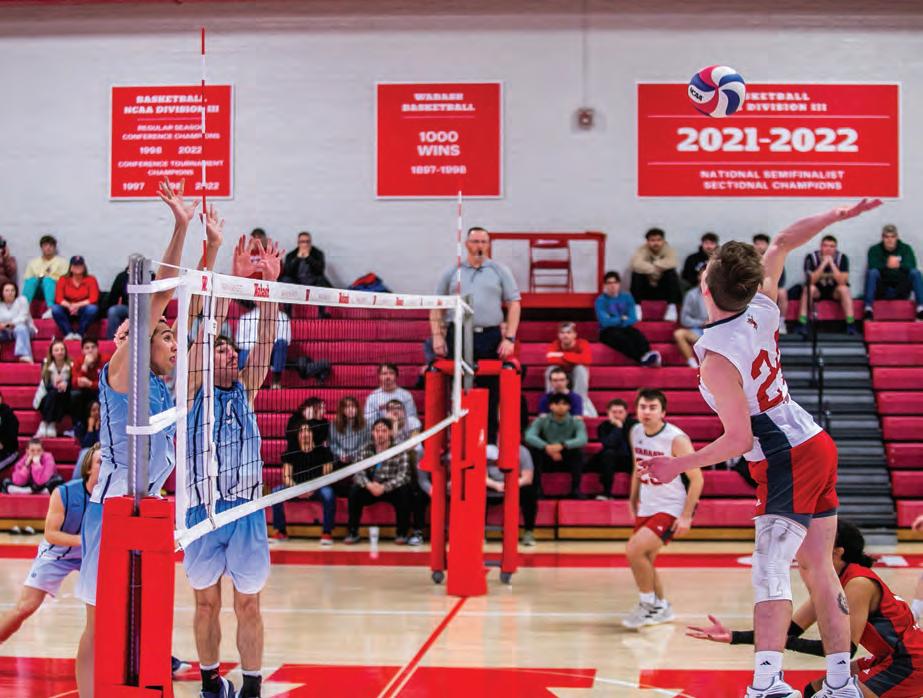
swinging in the second set, springing to an early 18-9 lead and winning it 25-21 after stifling a late push from Fontbonne. The third and fourth sets were the most contested of the entire competition.
Unfortunately, the Little Giants feel just short, losing by a score of 25-23 in both of the final sets.
The defeat to Fontbonne brought the team to an 8-15 record on the season with an 0-3 MCVL record. Despite pushing hard, the team has yet to secure that elusive first con-
Volleyball team assistant provides sideline view of volleyball’s season so far
SEAN BLEDSOE ’26 | SPORTS COLUMNIST
• In November 2022, Head Volleyball Coach Ryan Bowerman gave me a unique opportunity to join the volleyball team as an assistant. Since then, my roles have varied wildly. Some days I am a practice player, filling in a spot on the floor. Other days I’m a shagger, picking up the scattered balls after a practice drill or simply an extra set of eyes for Coach.
But whatever my role is, I have been able to observe and learn about the volleyball team from a unique perspective. My main takeaway? Don’t underestimate this squad.
The Little Giants began their season with a pre-conference record of 8-12. Considering that in the program’s first two years of existence Wabash only won five games total, this year’s record so far is nothing short of remarkable.
But the team’s strength is not limited to its victories. On the contrary, some of the real improvement and character development has come in the games that Wabash didn’t win.
“Wabash may be the conference underdogs, but make no mistake— this team is here to win. The worst thing an opponent could do is underestimate these Little Giants.”
“You can see our progress not only in our wins but even in some of our losses,” said Bowerman. “We have played a lot closer with teams that, in the past, we haven‘t been able to hang with.”
When looking at last year’s campaign, the Little Giants only pushed five games to four sets or more, and they lost all five of them. This year, however, has proven to be a
different story. Wabash has managed to push nine games to four sets or more, and the team has managed to win two of those games. It isn’t perfect by any means, but it’s an immensely positive trend.
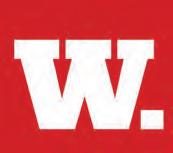
In my eyes, this increase in competitiveness should not be a shock to anyone. This team is gritty, and they embrace the underdog mentality. They want teams to come in overly confident and send those teams home disappointed.
But in order to do that more consistently, the Wabash team has to, in the words of setter Will Beikes ’25, get over a “mental hurdle.”
“We’ve never been in situations that are super tight; that’s kind of where we’re stuck right now,” said Beikes. “Just being able to stay mentally strong throughout the entirety of games…it’s just a matter of getting the job done.”
Coach Bowerman has done an outstanding job of recognizing where the team struggles in those close games and adjusting the practice plan in order to turn the team’s weaknesses into strengths.
The first half of practice usually focuses on some of the smaller and more individualized things like serving and position work. But as the latter half of practice gets underway, Bowerman has the team do situational work, and he has created a unique method to keep it fun, competitive, and focused.
First, Bowerman produces a pile of folded pieces of paper. The papers have game-like scenarios written on them and someone from one of the teams draws from the pile. These scenarios range from “serving, down 20-23,” to “receiving, tied 24-24.” Pretty much any late-game scenario you could think of is in the pile. By putting guys into these tough predicaments, Bowerman has found a way to mimic what it actually takes to close out a set in a real game.
Another thing that Bowerman has emphasized during the situa-
ZACHARY SMALL ’25
ference win.
“We had a tough start to the conference season,” said Bowerman.
“Despite the losses, we played pretty competitively in those matches. It felt like we hung in there and had a few moments that we didn‘t execute or take advantage of where we could have. But we also saw some things that were pretty positive from all those matches.”
The Little Giants will play Trine University on Friday, March 24, for their next conference appea-

rance. This will be the team’s second time facing Trine, the first being a non-conference match earlier in the season. In the earlier match, Wabash narrowly lost 1-3 after forcing extra points in the final set. But given that Trine boasts the second-best conference record, it will be no easy task to eke out a win.
“We played Trine earlier in the season, which was a close set match, but they‘ve been playing pretty well lately,” said Bower-
man. “They‘ve got a couple players that are some of the conference leaders offensively. So we know that, going into that match, we‘ve got to play tough. In our last few matches we‘ve been serving really well. We’ve been passing pretty well and getting some really great block touches to be able to slow things down to net. I think if we can keep doing the things we‘ve been doing well, we should have a good competitive match against Trine.”
tional work is for guys to know their roles. In getting his players, as he puts it, “comfortable in whatever way they can contribute to the team,” Bowerman has solidified a core of players that know their roles and can execute them come matchday.
The toughest obstacle the team has faced recently is losing players. Up to this point in the season, the team has lost three players, forcing Bowerman to figure out new lineups. As a result, some players have had to develop into new roles.
One such player is Zachary Small ’25, who recently stepped into the starting libero position. Small knew that he would have to be the guy on the floor that communicated the most and the loudest, especially since one of the main struggles for the Little Giants this season has been communication. Personally, I cannot imagine a better guy to be in this role. Small is consistently the loudest player in practice and has taken to the role very quickly, earning himself a Midwest Collegiate Volleyball League Player of the Week award on March 14.
As the Little Giants continue MCVL conference play at Trine University on Friday, March 24, they will need to continue to communicate effectively and lead from the front. Wabash may be the conference underdogs, but make no mis-

take—this team is here to win. The worst thing an opponent could do is underestimate these Little Giants.
on
Sean Bledsoe ’26 is an assistant
the Wabash volleyball team.
PHOTO BY ELIJAH GREENE ’25
Ricky Sessions ’24 spikes the ball against St. Norbert College on February 17, 2023, at Chadwick Court.
COURTESY OF COMMUNICATIONS AND MARKETING
Zachary Small ’25 was awarded the Midwest Collegiate Volleyball League Defensive Week Eight Player of the Week on March 14, 2023.
SPORTS
PHOTO BY ELIJAH GREENE ’25
The team forms a huddle against Saint Mary-of-the-Woods College on February 7, 2023, at Chadwick Court.
10 | BACHELOR.WABASH.EDU | THE BACHELOR
Bledsoe: Come here overconfident, and we’ll send you away disappointed
COURTESY OF COMMUNICATIONS AND MARKETING
10.4 WABASH vs TRINE Team kills per set: Wabash College
TOTAL DIGS: 151 DIGS PER SET: 2.2 COURTESY OF COMMUNICATIONS AND MARKETING Wabash libero 11.8 Trine University 2023 STATISTICS Hunter
COURTESY OF TRINE ATHLETICS DEPARTMENT
2023 STATISTICS TOTAL DIGS: 185 DIGS PER SET: 3.2
Will Beikes ’25 winds up for a serve against St. Norbert College on February 17, 2023, at Chadwick Court.
Haas
Trine libero
SPORTS EDITOR • The Wabash rugby team plays its first and only home tournament of the year on Saturday, March 25, at Little Giant Stadium. With Cedarville University, Purdue University, Indianapolis University Purdue University Indianapolis (IUPUI) and DePauw all in attendance, the event promises to put on display some of the finest rugby talent in the Midwest.
But, I hear you asking, what on earth are the rules of rugby? Isn’t it just wonky football? Well, in a way, yes—though it might be fairer to say that football is a skewed version of rugby.
So, let me lay out some of the basic rugby rules for you. And although this guide is far from a comprehensive list of rules, it should give you all you need to know to cheer the Little Giants on to victory.
What is the objective?
The objective in a game of rugby, like most ball sports, is simple: score more points than your opponent. Broadly speaking, there are three ways a team can score points:
(1) Try. The equivalent of a touchdown in football, a “try” is worth five points. However, unlike in football, the ball must be touched to the ground in the “tryzone” (endzone) for points to be awarded.
(2) Conversion. Equivalent of a PAT in football, a conversion is worth two points and comes after a try. A conversion can be taken as close to the goalposts as a kicker desires. However, it must also be kicked in line with where the try was scored.
(3) Penalty kick. Worth three points and awarded when an opponent commits a foul.
How many players are on each team?
In worldwide rugby, there are two prevailing forms: rugby union and rugby league. However, in the United States, only rugby union is played.
Rugby union, which follows the points system described above, is further broken down into two main forms: 15s and 7s. If it wasn’t obvious, the names correspond to how many players are on each team. While 15s is the traditional form of the sport, 7s is more accessible and more widely played in America.
How does gameplay work?
The basic mechanics are very simple. A 7s match is
SPORTS
RYAN PAPANDRIA ’25 | SPORTS WRITER • The Wabash golf team will tee off at Covered Bridge Golf Club in Sellersburg, Indiana, to take on DePauw in a match play format on March 27-28.

Rather than the traditional stroke play format, where each player attempts to record the lowest score possible, players in this two-day tournament will attempt to score lower than one specific opponent on the other team.
In this match play format, each Wabash golfer will be paired with a golfer from DePauw with the goal to score lower than their counterpart on a hole-by-hole basis. For example, when a Little Giant birdies a hole and his Tiger opponent only makes a par, the Wabash golfer wins that hole, and he leads 1-0.
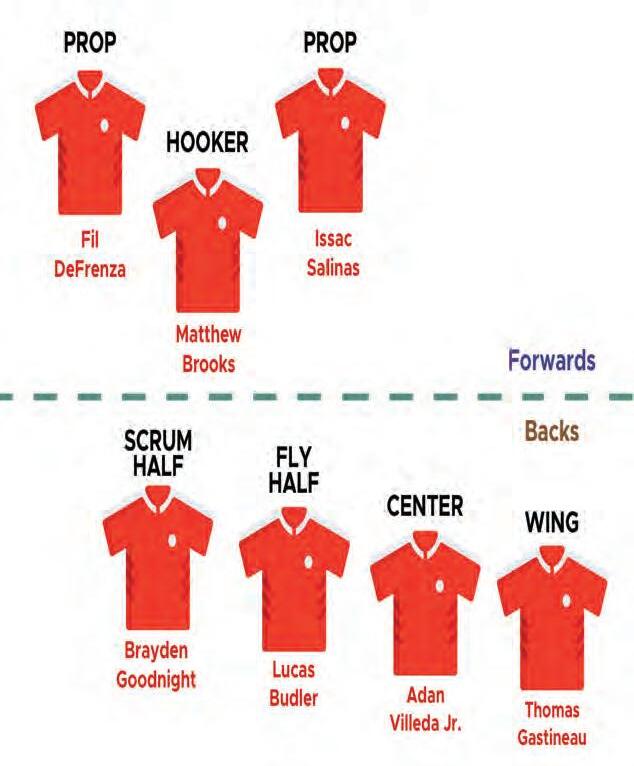
Although this tournament style is not played as often as stroke play, there are many tournaments like this, such as the WGC-Dell Technologies Match Play event on the PGA Tour, which tees off on March 22. This tournament is basically the PGA equivalent of March Madness.
Because of the different format, the approach to a match play tournament must change as well. Lewis Dellinger ’25 views match play as a
14 minutes long, broken into two seven-minute halves. The ball can be moved up the field by running, passing or kicking it. There is, however, one very important caveat—the ball can only be passed backward.
Wait, you can only pass backward!??
Stay with me. Yes, you read that right—in rugby, you can only pass backward. A forward pass is a foul that results in a turnover of possession and a “scrum” (more on scrums later). Therefore,
there really is merit to the statement that in order to go forward you must first go backward.
What are the positions?
Given that Wabash plays 7s, let‘s stick with the 7-aside form of the game for now. In 7s, the players are roughly broken into two groups: forwards and backs. You can sort of think of forwards as defensive players and backs as offensive players, but in reality both sets of players play both offense and defense.
A rugby 7s team will typically have three forwards and four backs. The forwards participate in the scrum and consist of two props (one on either end of the scrum) and a hooker (no, not that kind of hooker). Think of forwards like offensive linemen, and especially think of the hooker like the center who hikes the ball back toward the quarterback.

The backs are the fun positions. The main attraction is, of course, the scrum half, who you can think of as the quarterback of a rugby ope-
ration. It is the job of the scrum half to put the ball into the scrum, collect the ball at the back of the scrum and act as a playmaker in possession. But the scrum half also has a defensive role, acting almost like a safety when the opposition has the ball. It is by far the most varied position in rugby.
There are three other backs alongside the scrum half. First there is the fly half, who is the side’s main playmaker and often doubles up as the team’s kicker. Next is the center, who passes the ball out to the wing and is usually the largest of the attacking players. Last is the winger, who stays out wide and scores most of a team’s tries. The wingers are the wide receivers of the rugby world who double up as corners on defense.
Why does play never stop?
It is important to note that, unlike in football, play does not stop when a tackle is made. Instead, when a player is tackled to the ground, they must release the ball. When this happens, the attacking team forms what is known as a “ruck.”
In the ruck, teammates of the tackled player step over the ball and push away defenders who are trying to pick up the ball. Eventually, somebody else picks up the ball, and play resumes.
What does the scrum do?
The referee can award a scrum when a team commits a foul. In the scrum, the for-
wards of one team bind together with the forwards of the other team and push. The ball is then rolled into the middle of the scrum where the hookers use their feet to try and move the ball back toward their scrum half. However, in modern rugby, the scrum has become almost useless as teams are allowed to roll the ball almost directly to the feet of their own hooker.
What can a team be penalized for?
I have already mentioned one of the most common fouls: the forward pass. But there are countless other things outlawed in the rules of rugby. They include, but are certainly not limited to:
(1) Knock-on. A slightly strange foul, but a knock-on occurs when a player loses possession of the ball and it drops in front of him. Think of it almost like a fumble. A knock-on results in a scrum.
(2) High tackle. Tackling above the shoulder is strictly forbidden and usually results in a two-minute trip to the “sin bin” (i.e., the player is ejected for two minutes and the team is forced to play with six men during that time).
(3) Not releasing. When a player is tackled, they must release the ball. Failure to do so results in a penalty call.
(4) Tackling in the air. Defenders cannot tackle an opponent who is jumping for the ball.
more head-to-head and competitive environment than stroke play.
“You can view the opponents shots and choose whether you want to attack or lay back and let them make a mistake,” said Dellinger. “You aren’t just playing the course, but now the guy across from you.”
“It is either win or lose in match play— there is no middle of the field.”
Brayden Weiss ’24 sees match play as a mental adjustment. “Every shot matters in stroke play, because up until that last putt on the 18th, all of your shots count,” said Weiss. “In match play, you have a much better opportunity to make up for mistakes, but at the same time your opponent can also quickly come back from a tough hole.”
There is also a huge adjustment in expectations for individual Little Giants. For the team, the approach for the tournament has been to compete against each other with match play rules
in practice. Additionally, the golfers want to take a very smart and strategic approach to every individual hole.
“We are going to play a practice round the day before the tournament,” said Dellinger. “Once down there, I plan to look at each hole and determine which holes suit my game and which don’t.”
One of the key distinctions between match play and stroke play that both Dellinger and Weiss stressed is the ability to learn and experience the pressure.
“It is either win or lose in match play—there is no middle of the field,” said Dellinger. “You aren’t there to finish 20th, you are there to win.”
This, along with the evenkeeled mental approach, are two focuses for the Little Giants’ preparation for conference.
“It is really hard to believe in yourself to do something you have never done,” said Weiss. “This tournament gives us an opportunity to get some experience winning all the way down the team.” Dellinger echoed a similar sentiment.
doesn’t always come naturally,” said Dellinger. “You have to practice it, and I think this is going to
be
COURTESY OF COMMUNICATION AND MARKETING
a
toward winning conference.” Learning to win is a seemingly subtle but crucial goal for the Little Giants’ quest for a conference title.
the largest
this year,
to take
“The idea of winning a match against another team step in developing the program.
huge step
Although beating DePauw is far from
goal
the team looks
another
BENJAMIN BULLOCK ’23 |
An American football fan’s guide to rugby
- Lewis Dellinger
’25
PHOTO BY JAKE PAIGE ’23
Forwards of the Wabash rugby team bind and attempt to hook the ball back in a scrum against DePauw on November 16, 2022, at Little Giant Stadium.
GRAPHIC BY ARMAN LUTHRA ’26
Projected starting lineup for the Wabash rugby team ahead of their home tournament on Saturday, March 25, 2023, at Little Giant Stadium
THE BACHELOR | BACHELOR.WABASH.EDU | 11
Unusual format forces golf team to make mental adjustments
Brayden Weiss ’24 drives out of the tee box at the Wabash College Invitational on October 11, 2022, at Broadmoor Country Club in Indianapolis.
Is this the beginning of the end for tennis’ doubles dilemma?
BENJAMIN BULLOCK ’23
| SPORTS EDITOR • “Right now, our focus is on our doubles play,” said Head Tennis Coach Daniel Bickett in last week’s issue of The Bachelor. On the team’s spring break trip to Florida, Wabash went 6-6 over four matches in doubles play. And over the course of the season, Bickett has struggled to find consistency in his doubles pairings, fielding some 26 different combinations on the season so far.
But maybe—just maybe—the days of doubles dilemmas are over.
The Little Giants welcomed Hanover College to Crawfordsville on Saturday, March 18, defeating the Panthers in a dominant 8-1 victory. It was the first time Wabash had beaten Hanover, who play in the highly competitive Heartland Collegiate Athletics Conference, since January 2017. It also moved the Little Giants to 8-4 on the season, two more wins than the team picked up in the entirety of 2022.
But more significantly, Wabash won all three doubles matches, and did so in tremendous style.
“It was a good doubles match across the board,” said Bickett. “And with how good our singles are, getting that 3-0 or 2-1 lead is really tough for other teams to overcome.”
“At the end of the day, the court is still going to be 78 feet long, 27 feet wide for singles and 36 feet wide for doubles. As long as we go in there and play how we want to play, we’ll be happy with our performance.”
The weekend didn’t go off without a hitch. Liam Grennon ’24, who usually plays #1 doubles alongside Cole Borden ’24, was unable to play against Hanover, forcing Bickett to adjust his lineups.
“With Liam [Grennon] out, we actually didn’t have one of our normal doubles lineups this weekend,” said Bickett. “So, we were looking for guys to step up, especially because we had our #2 team playing
Outdoor track season begins
ANDREW DEVER ’25 |
ON EDITOR • Coming off another dominating indoor track season, including a decisive weekend win to claim another NCAC conference championship and Hayden DiemerMcKinney’s ’26 third-place finish in the final of the NCAA 800-meter run, Wabash enters the outdoor track season looking to continue their momentum into the outdoor track and field championship.
The Little Giants track and field team has seen continued and lasting success in recent years. In the 2021-22 calendar year, the team won both the indoor and outdoor NCAC championships. With the 2023 indoor championship already wrapped up, other NCAC teams will be vying to claim the top spot in the conference, desperate to break Wabash’s firm grasp.
However, according to distance runner Thomas Gaines ’23, the desire of other NCAC track teams to unseat Wabash is just more fuel to drive the competitive spirit of this Little Giants team. And they will need all of that drive to continue to be the standard-bearers of NCAC outdoor track and field.
“Wabash’s track and field program has been dominating the NCAC outdoor conference championships for years, and that has earned us a huge target on our backs,” said Gaines. “We know the other teams in the conference are doing everything in their power to beat us, but we are excited to meet that challenge head on.”
On Saturday, March 25, Wabash begins their preparations for the Indiana and NCAC championship meets, fully rested from their February indoor triumph. Wabash will begin the outdoor campaign by splitting the team to participate in two separate meets.
Half of the team will travel to the Margaret Simmons Invite at Murray State University in Murray, Kentucky, while the remaining team will head to the Eastern Illinois University Meet in Charleston, Illinois. These meets will serve as two of the four preliminary meets before Wabash’s first major competition, the Indiana Division III Championships at DePauw on Saturday, April 15.
Then, Wabash will compete in two more preparatory meets, one on April 21 at Rose Hulman and the other on April 29 at the Indiana State University Open.
at #1 and our #3 team playing at #2.”
In the #1 doubles match, Alvaro Alonso-Sanchez ’23 and Augusto Ghidini ’26 stepped in in place of the usual Borden-Grennon lineup. Up against Hanover’s junior duo of Joey Keal and Charley Williams, the Little Giants pair lost the first game but quickly put themselves in a strong position. With Grennon on the sidelines giving advice, Alonso-Sanchez and Ghidini coasted to an 8-5 victory.
“I think the most important thing in doubles is being aggressive and playing the net, and I have just tried to do what coach tells me to do,” said Ghidini. “When returning, we want to take advantage of the net and put pressure on the opponents, and I think we did that this weekend.”
The other two doubles matchups went just as smoothly for Wabash. In the #2 match, Ethan Koeneman ’26 and Cole Shifferly ’26 swept to a resounding 8-2 victory, while in the #3 match Borden and Blake Discher ’26 dug deep to eke out an 8-6 win.
Something has changed in the Wabash tennis camp, and at the heart of it is a newfound focus on doubles. Despite all the inconsistency and experimentation of the season so far, Bickett seems to believe that he has finally found a winning formula.
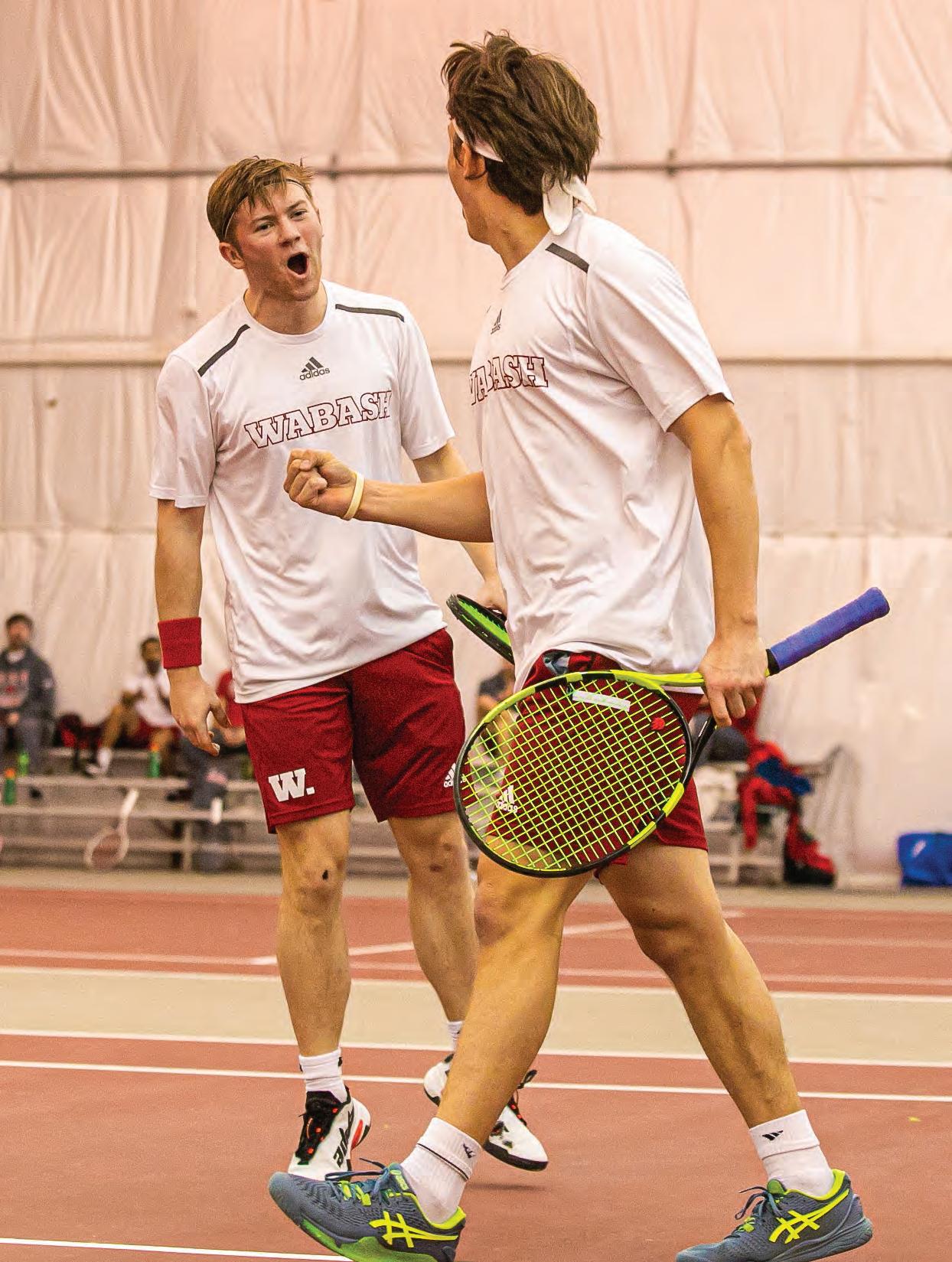

“I think we have our three teams now,” said Bickett. “There may be some jostling for position, but for the most part I don’t think we’ll be moving a lot of things around. We have our three best combinations, and now it’s just a case of finding which positions they will be most successful in.”
A big part of Bickett’s new formula is chemistry. Like in any team sport, there is more to finding the perfect tennis pairing than just picking the best players. Doubles needs teams, not individuals, and one of the strongest pairings on the Little Giants roster is the Koeneman-Shifferly duo.
“After we lost the first match in Florida, Coach [Bickett] put me with Shifferly, who is one of my fraternity brothers,” said Koeneman. “I’ve been playing with him since I was about 10 years old, and we are a really powerful team. We came out [against St. Thomas University], beat a really good team
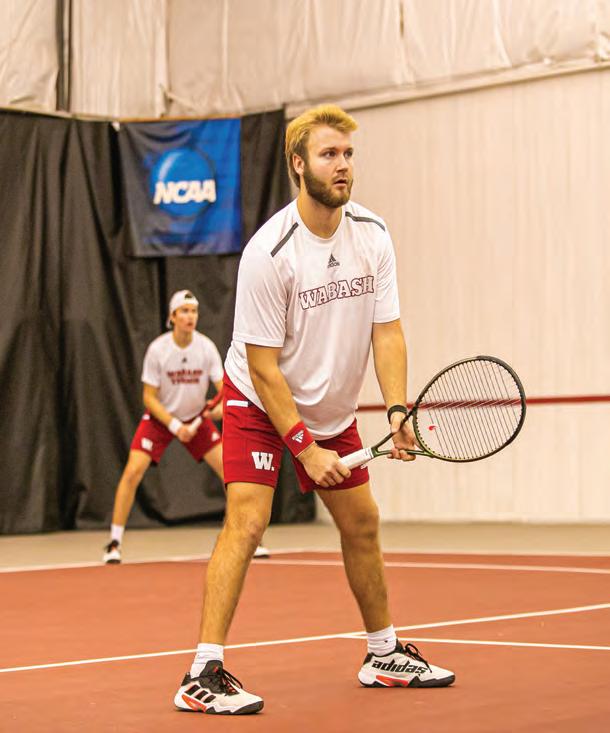
and ever since then we have kept that same lineup.”
That team bond and focus on consistency is exactly what Bickett has been looking for all season. And it is exactly that attitude that he believes his team can harness as the season progresses.
“In doubles, a lot of it comes down to the atmosphere and the energy you can create,” said Bickett. “If you can be loud, if you can be energetic, if you can be fiery—all of those things can make the difference. It’s quick, fast action. And I think that, even though we have been changing the doubles teams around a lot, the biggest thing is that our energy has really picked up, and that’s where we are hitting our stride.”
The Little Giants are looking to carry this energy through to their next match against Roosevelt University on Saturday, March 25. But Roosevelt poses a unique problem: the unknown.
For one, the Roosevelt tennis team has never before played
against Wabash. But more strangely, the Lakers, who play in the NAIA-affiliated Chicagoland Collegiate Athletic Conference, have themselves only played one competitive match all season.
“Regardless of the opponent, the preparation stays pretty much the same,” said Koeneman. “We are just going to go and play our style of tennis and hope we can execute it.” Bickett echoed the same sentiment.
“At the end of the day, the court is still going to be 78 feet long, 27 feet wide for singles and 36 feet wide for doubles,” said Bickett.
“As long as we go in there and play how we want to play, we’ll be happy with our performance.”
The match against Roosevelt will be yet another opportunity for the Little Giants to solidify their doubles lineups. And with conference play just around the corner, we will soon see if Wabash’s days of doubles drama are behind them.
Wabash will cap off the outdoor season on May 5 and 6 and compete to defend their many consecutive outdoor titles at the NCAC Outdoor Championships, at a location to be determined.
While the Little Giants will be competing in different meets to help them prepare for the NCAC meets, recent national success has allowed the team members to establish higher aspirations individually and as a team.
“We are putting in the work day in and day out to make sure that we continue getting our point and bringing back that conference champion title,” said Gaines. “We are also challenging ourselves to get more and more guys on that nationals roster.”
The outdoor track season differs from the indoor season. First, while the weather can play a factor in outdoor meets, wind is the most significant factor that is introduced through an outdoor setting. Wind, either via wind assistance or resistance, drastically alters running strategy, times and, sometimes, results. What’s more, runners‘ treatment of the track curves and straights, combined with wind conditions, often can make or break a race.
Additionally, while the indoor track is only 200 meters long, the expansion to an outdoor track of 400 yards introduces many new events into the fold. Prominently, the outdoor season will see the return of two of track’s most iconic races: the 100-meter dash and 110-yard hurdles.
For freshman, the change in atmosphere is apparent with the transition from indoor to outdoor.
“The outdoor season is filled with so much more adversity from different elements,” said thrower Quinn Sholar ’26. “I’m ecstatic to see how the team responds. It’s going to show what MOWNBU [men of Wabash, nothing breaks us] really means to us.” This sentiment was echoed by returning members of the team.
“Track challenges me mentally and physically,” said sprinter Jojo Carter ’25. “The life lessons I learn everyday at practice [are worth it]. I feel like applying these life lessons to our events is what puts us in front of the competition. We are a family!”
SPORTS 12 | BACHELOR.WABASH.EDU | THE BACHELOR
OPINI-
PHOTO BY ELIJAH GREENE ’25
Liam Grennon ’24 (left) and Cole Shifferly ’26 (right) celerbate an 8-2 doubles win against Principia College on February 25, 2022, at the Collett Tennis Center.
PHOTO BY ELIJAH GREENE ’25
Ethan Koeneman ’26 (front) and doubles partner Augusto Ghidini ’26 against Principia College on February 25, 2023, at the Collett Tennis Center.
- Coach Daniel Bickett

















 gzhu23@wabash.edu
gzhu23@wabash.edu









































